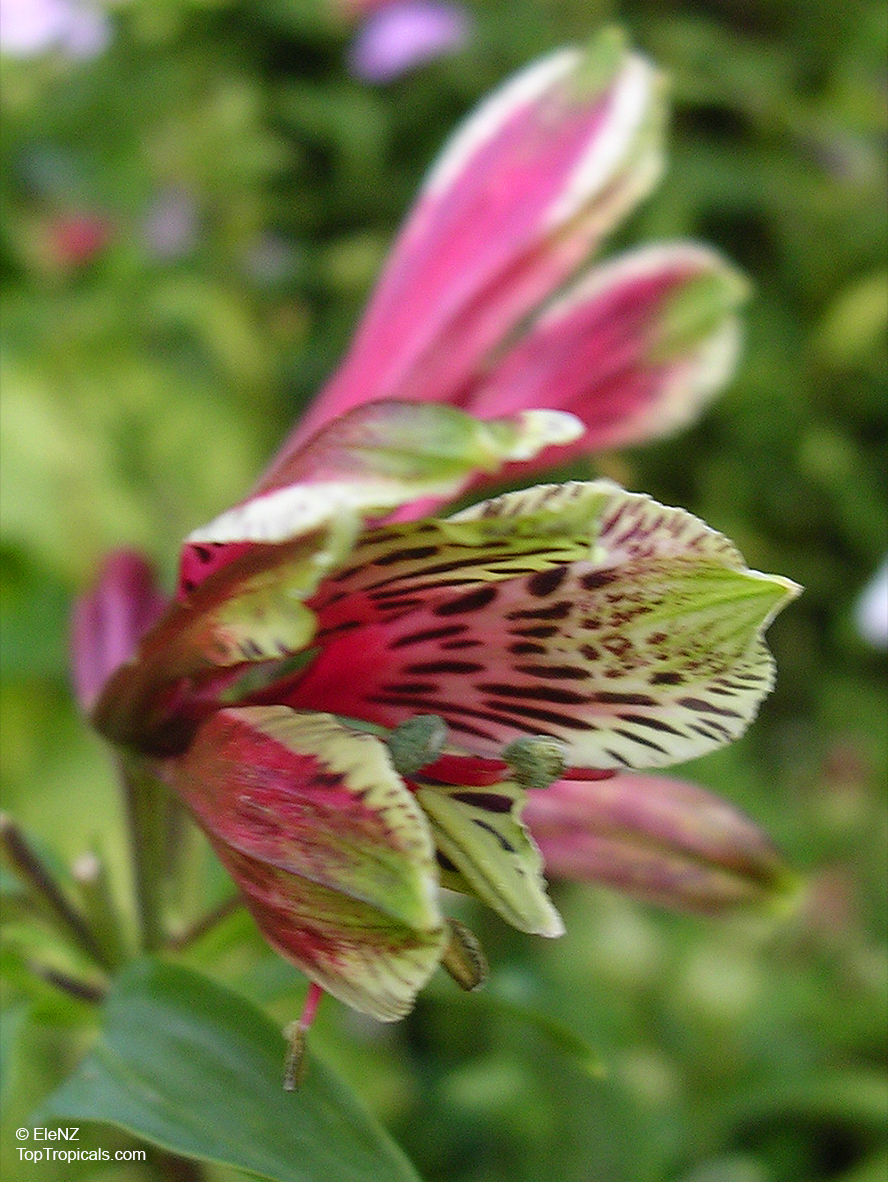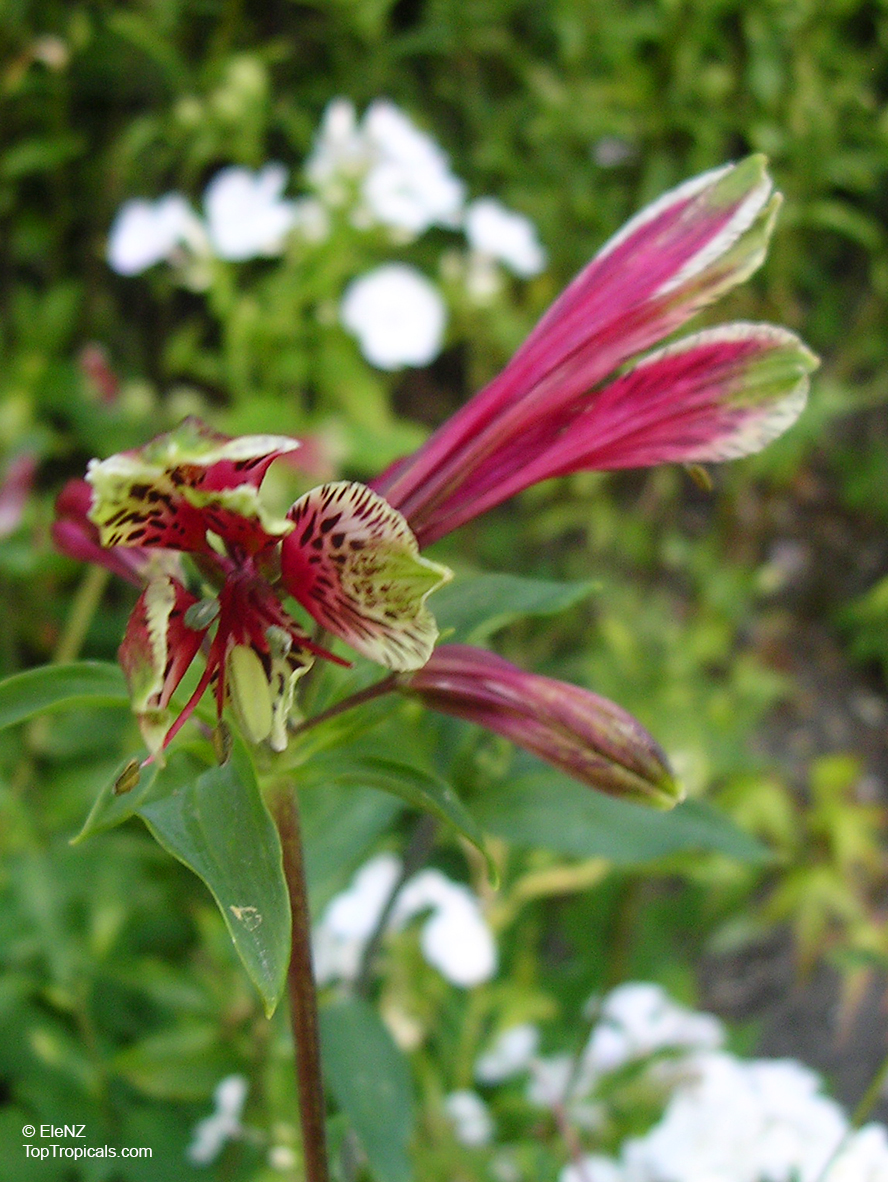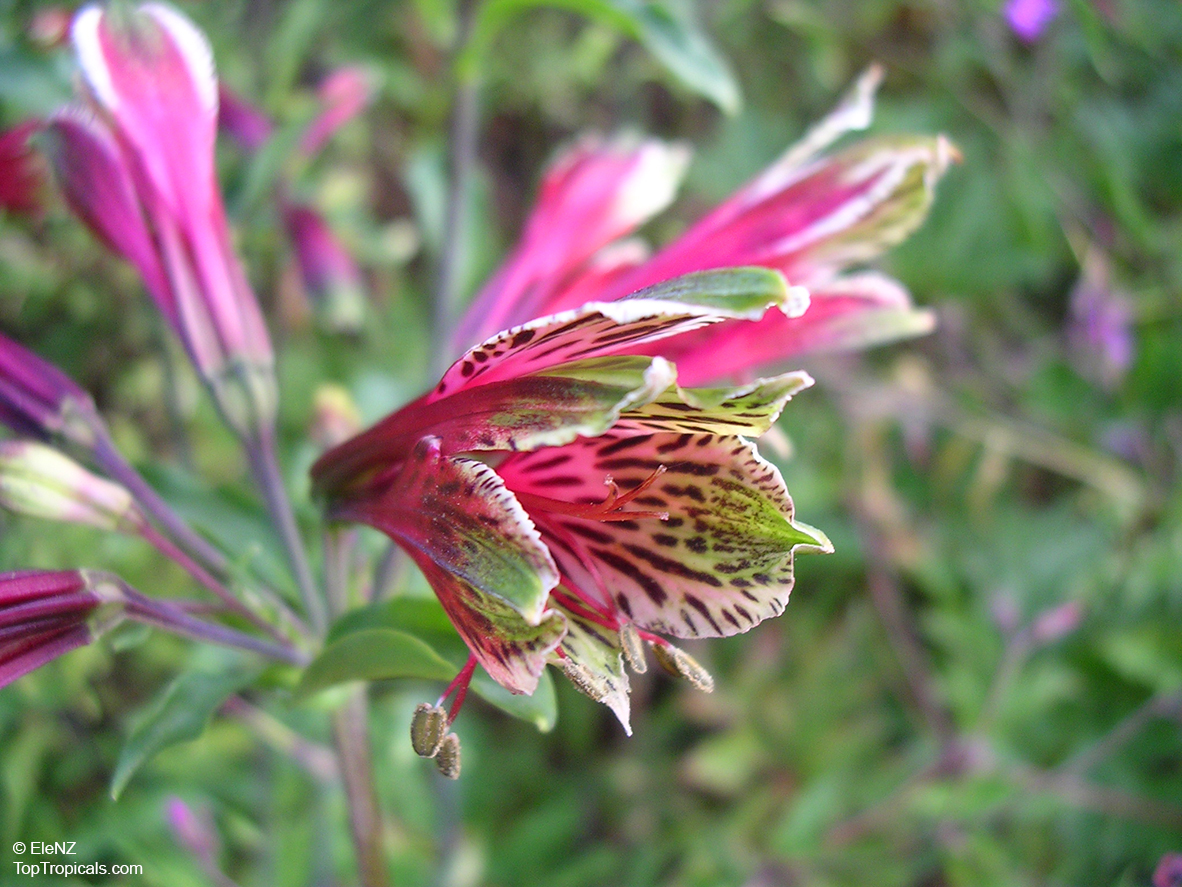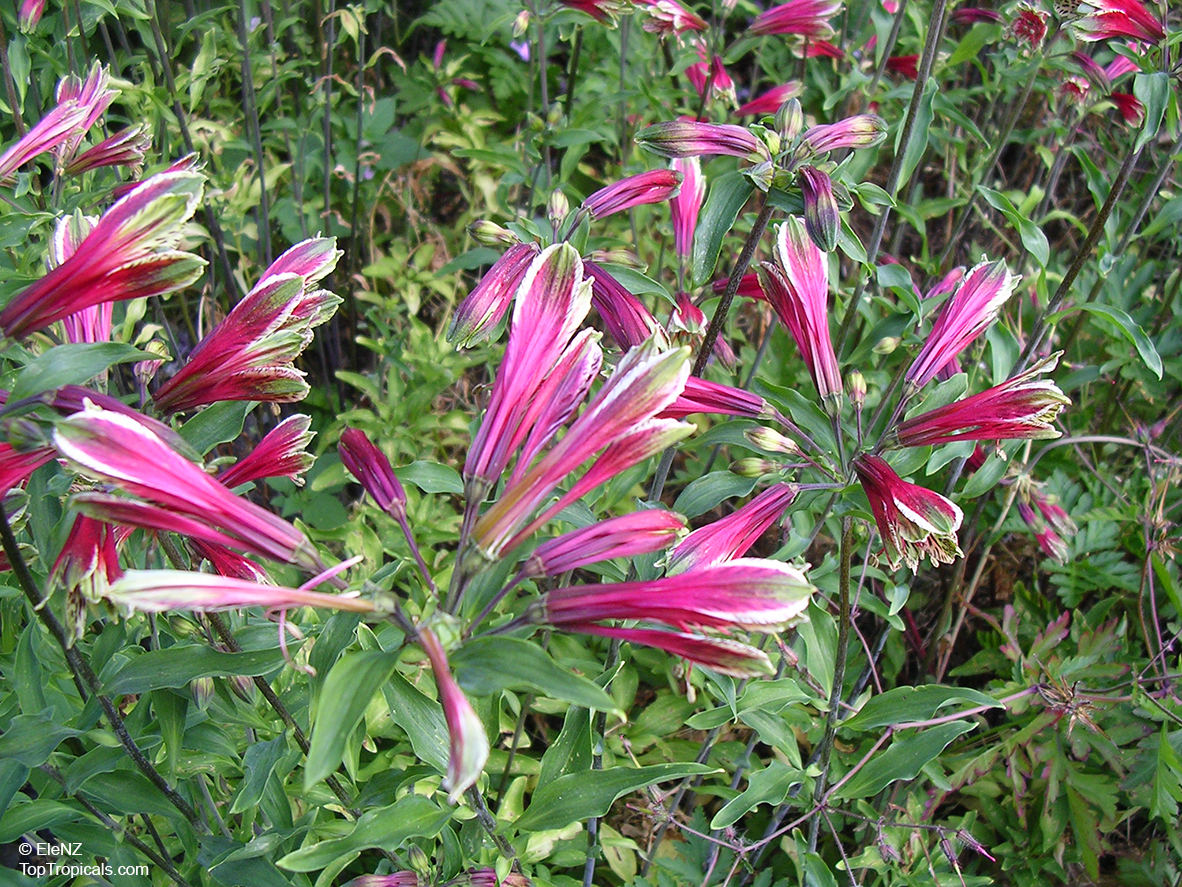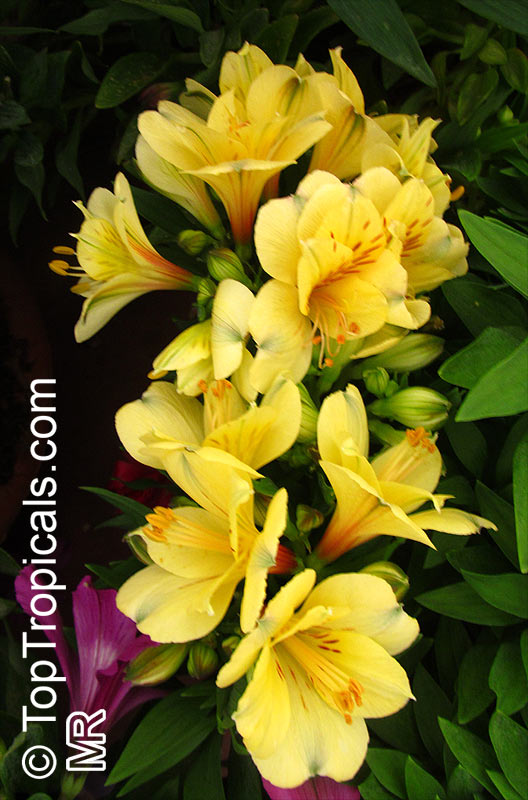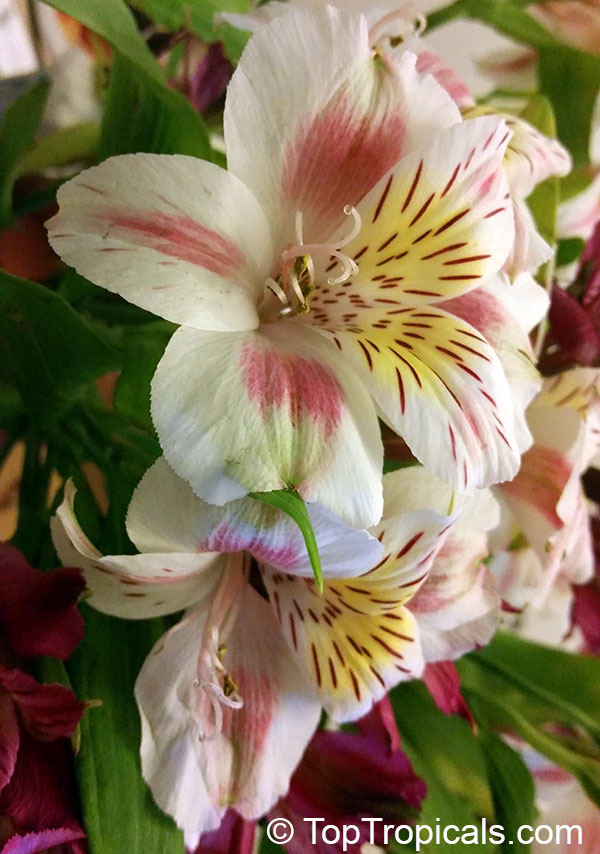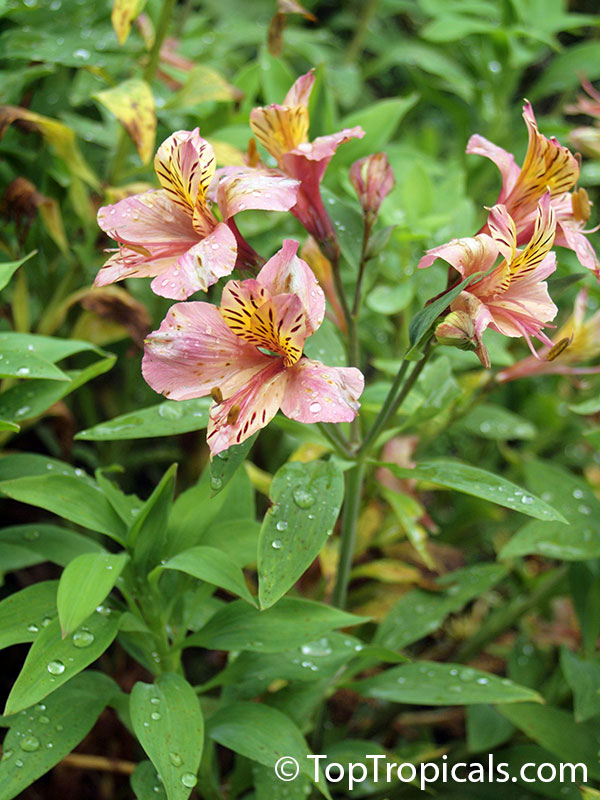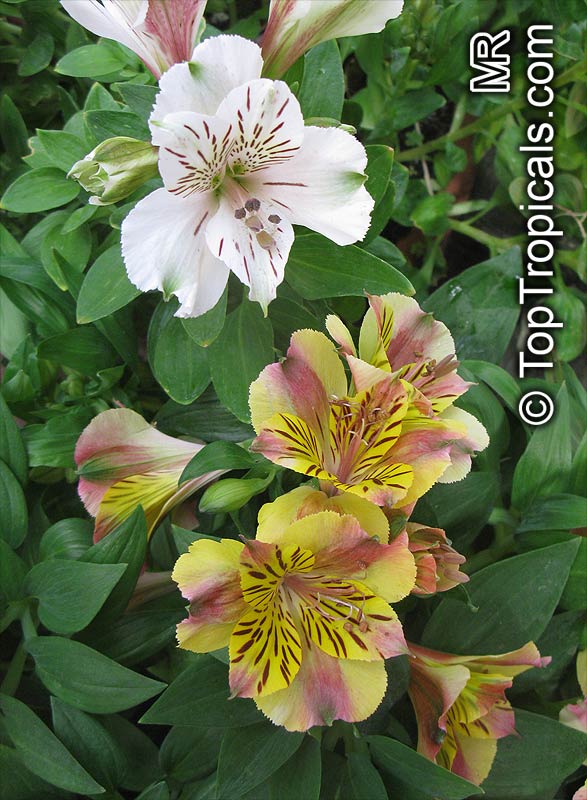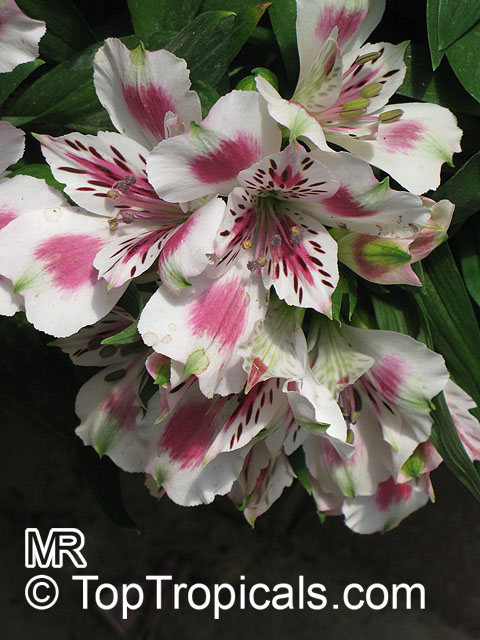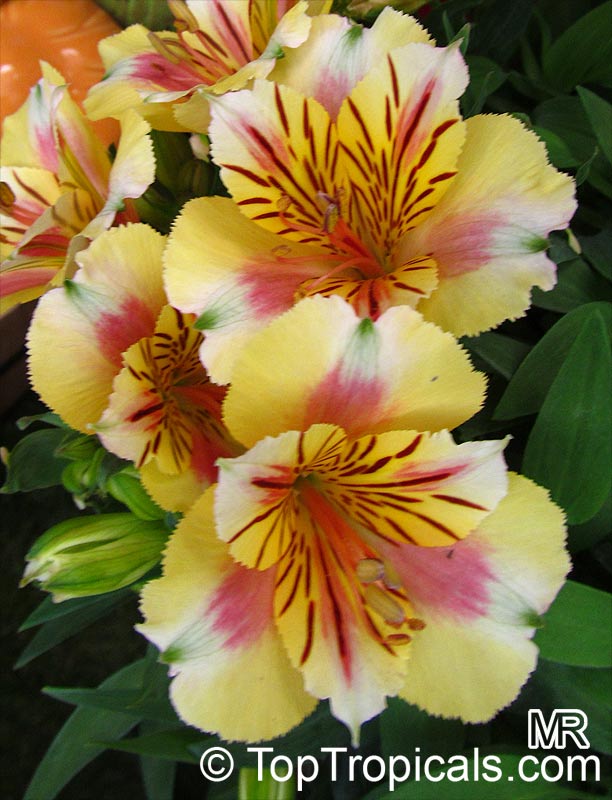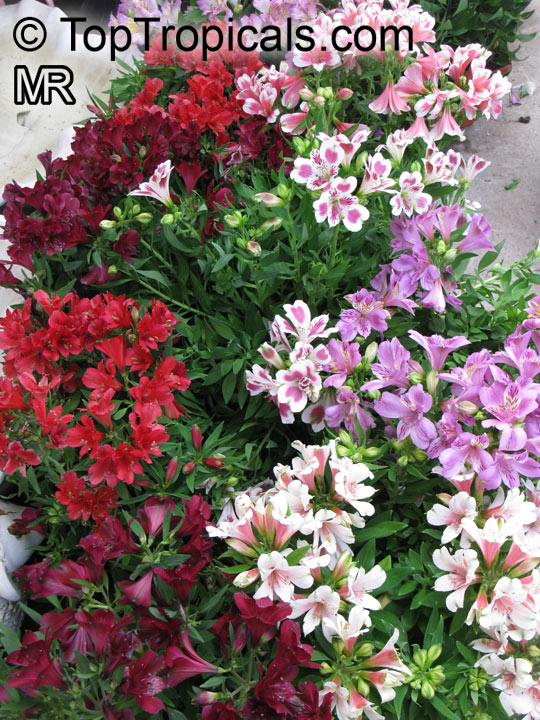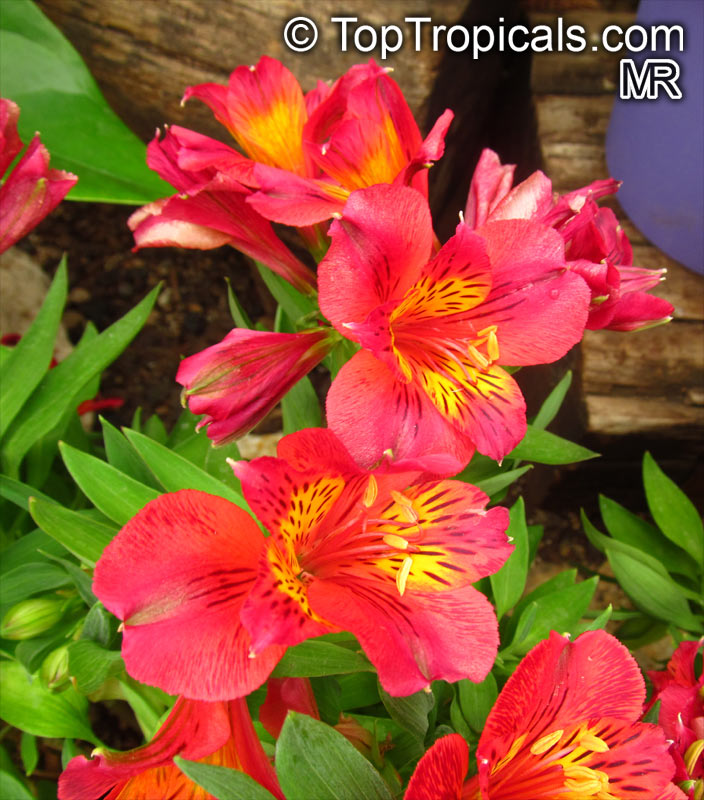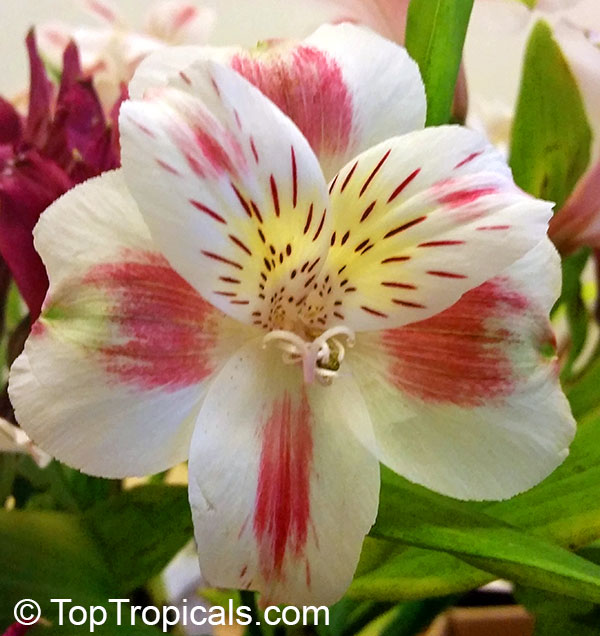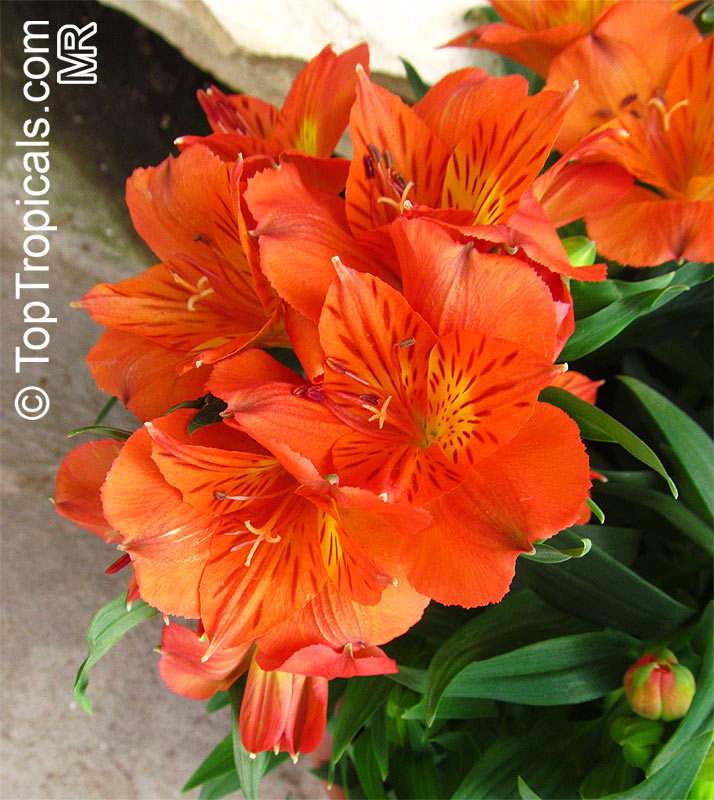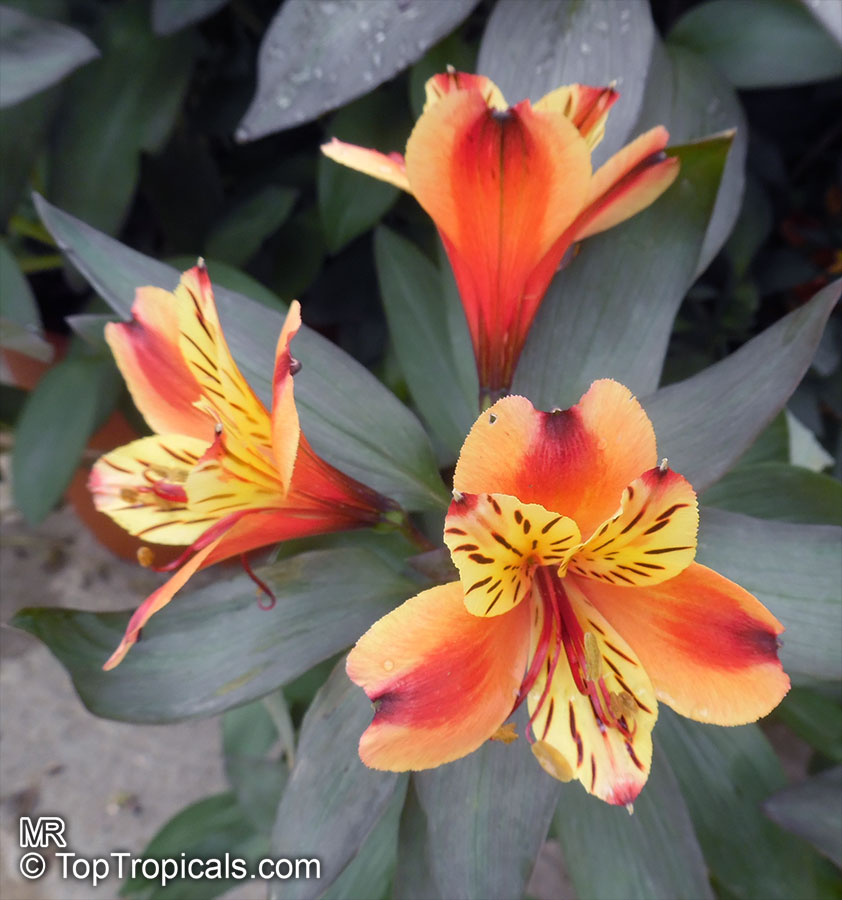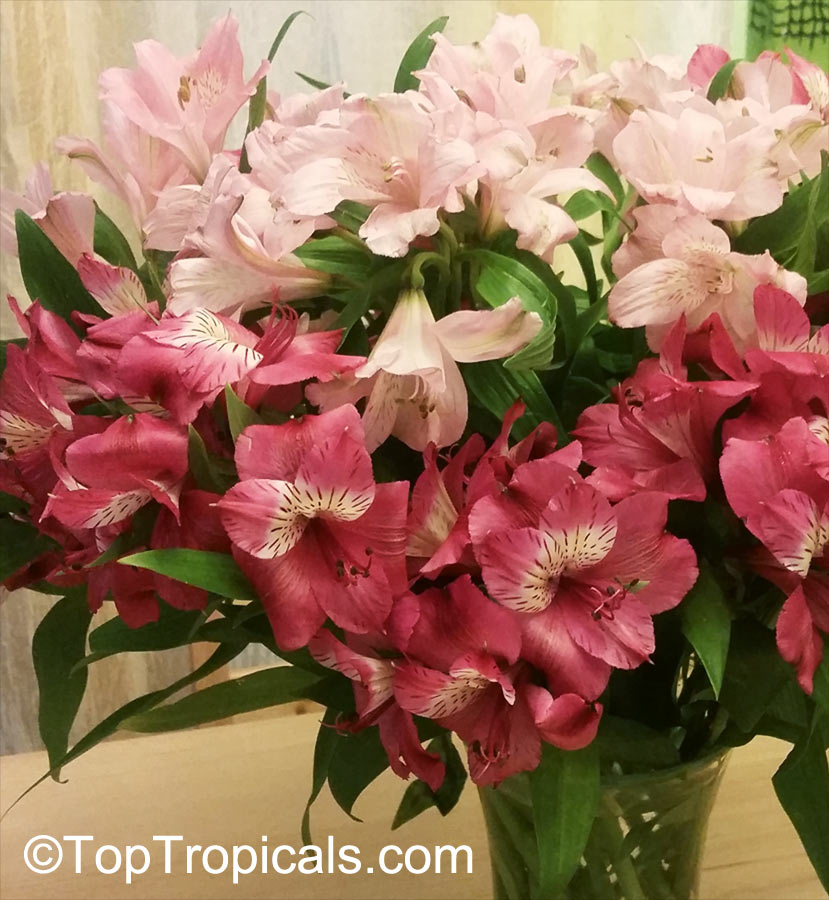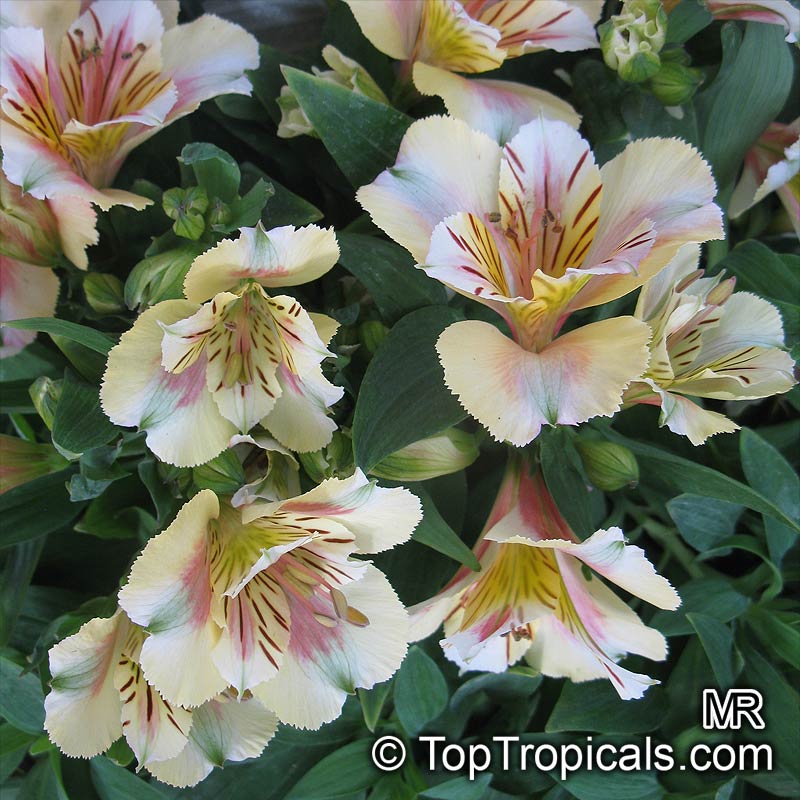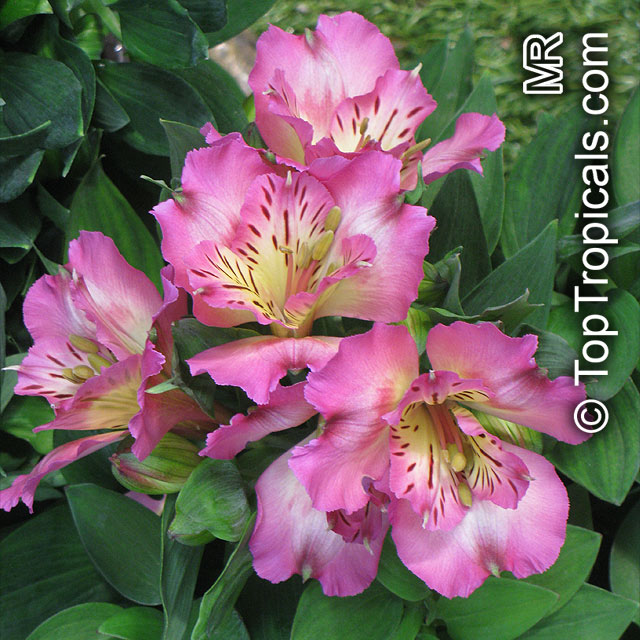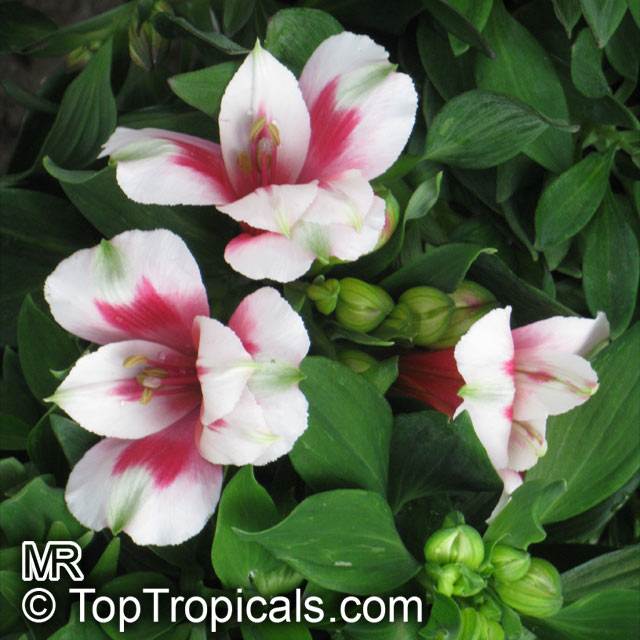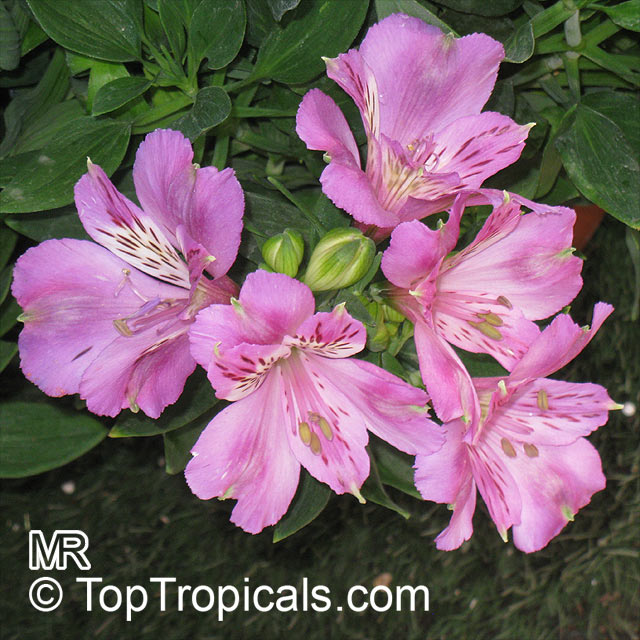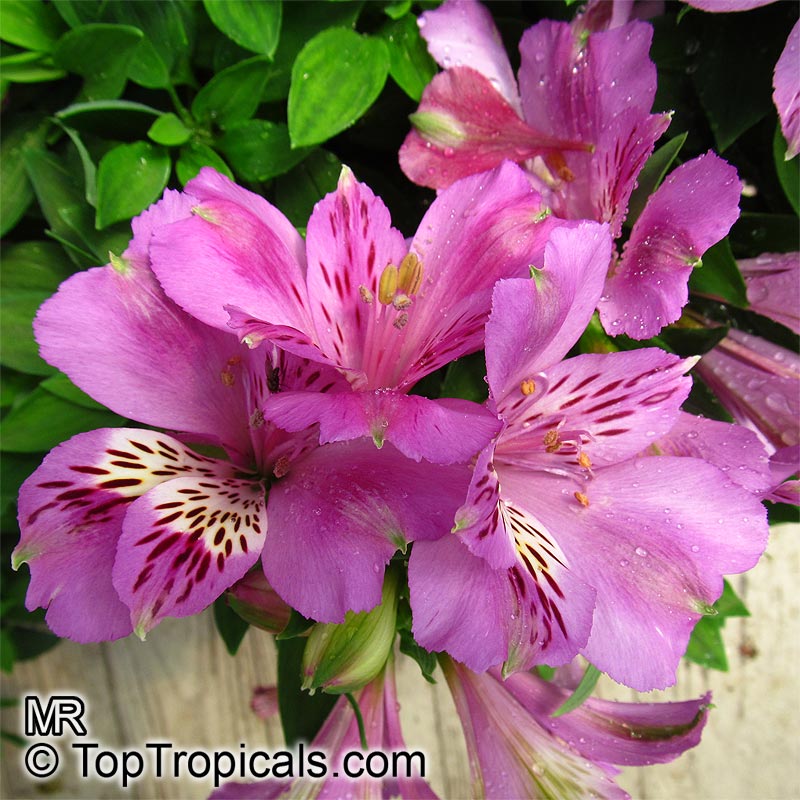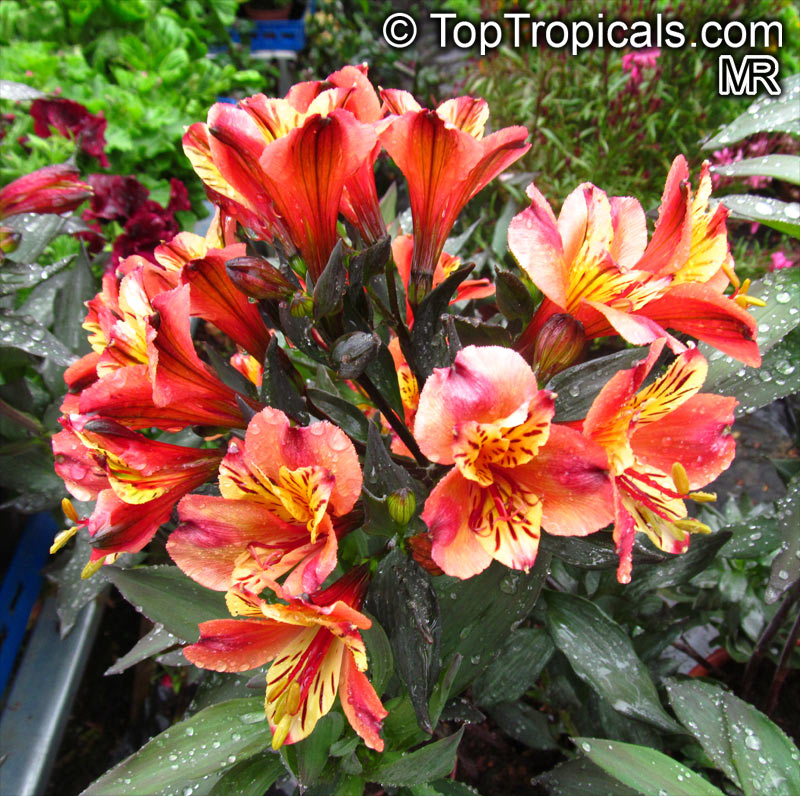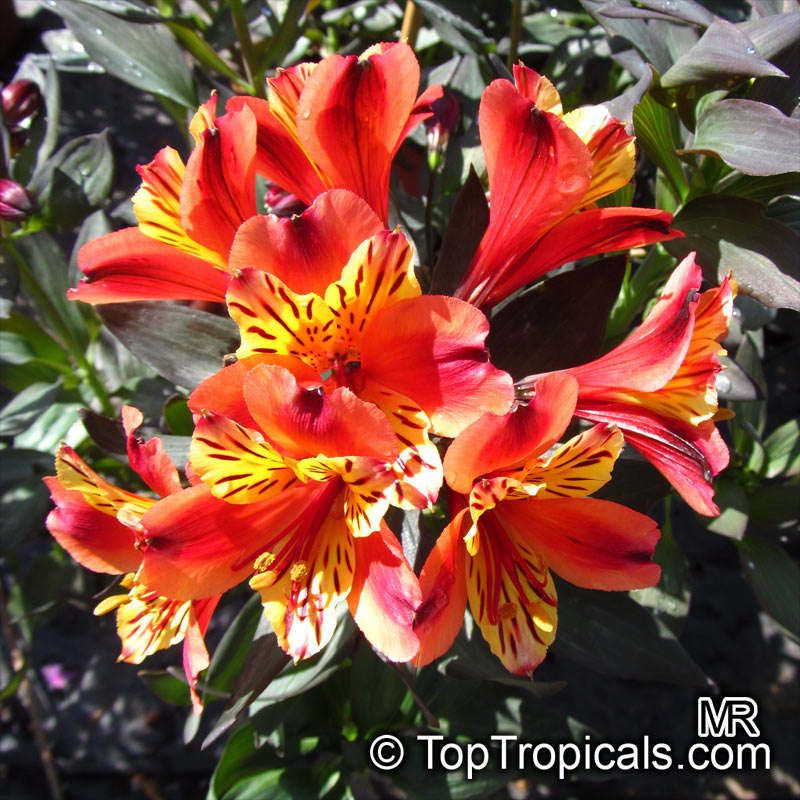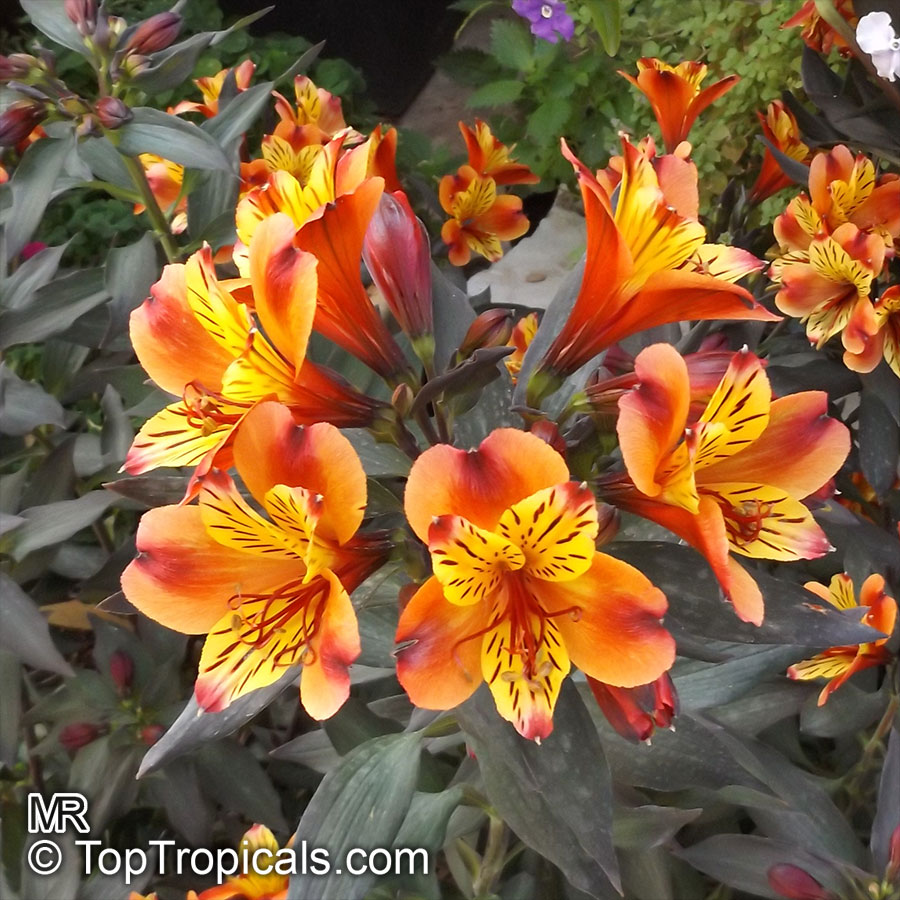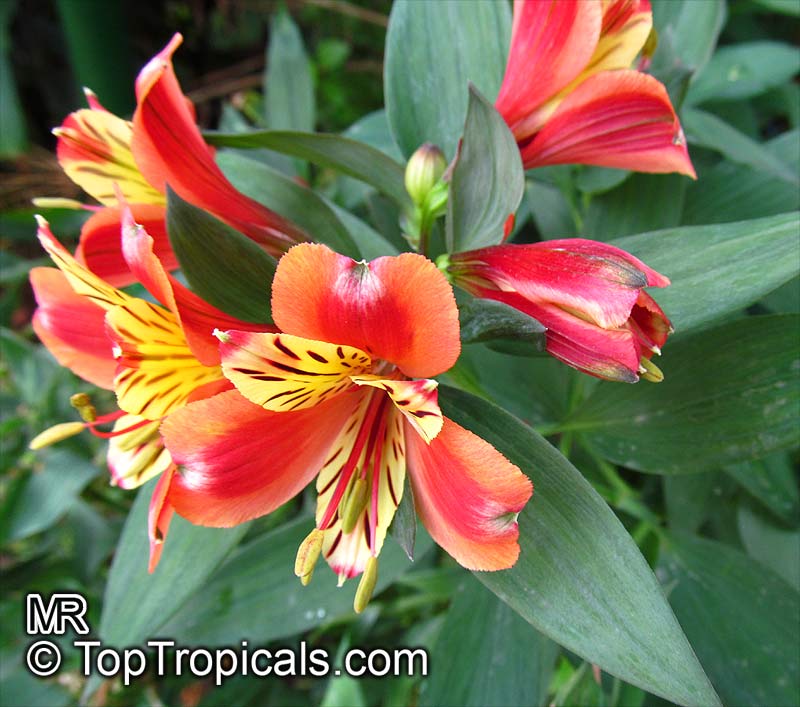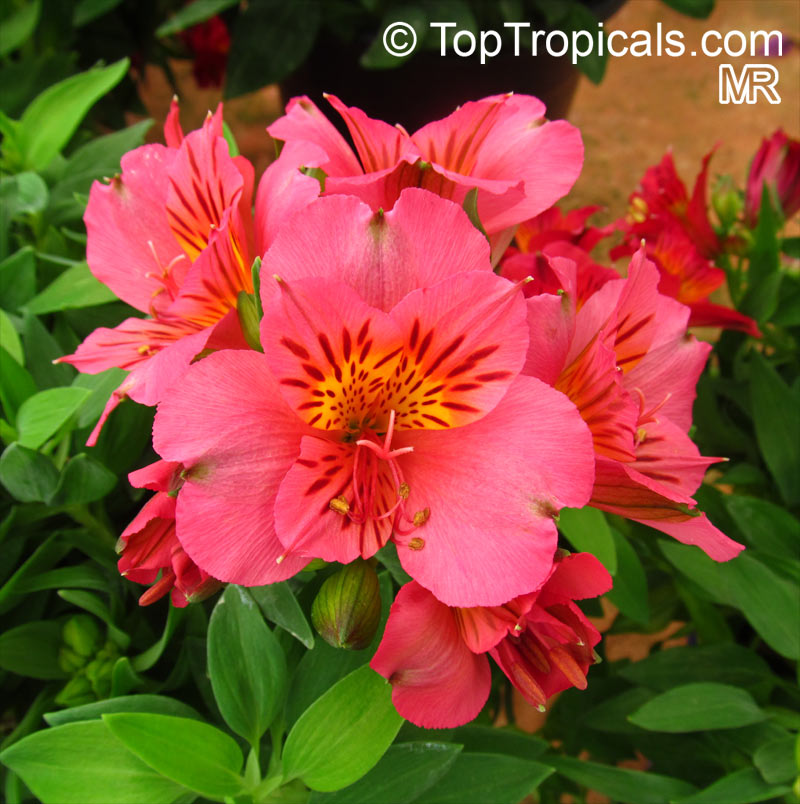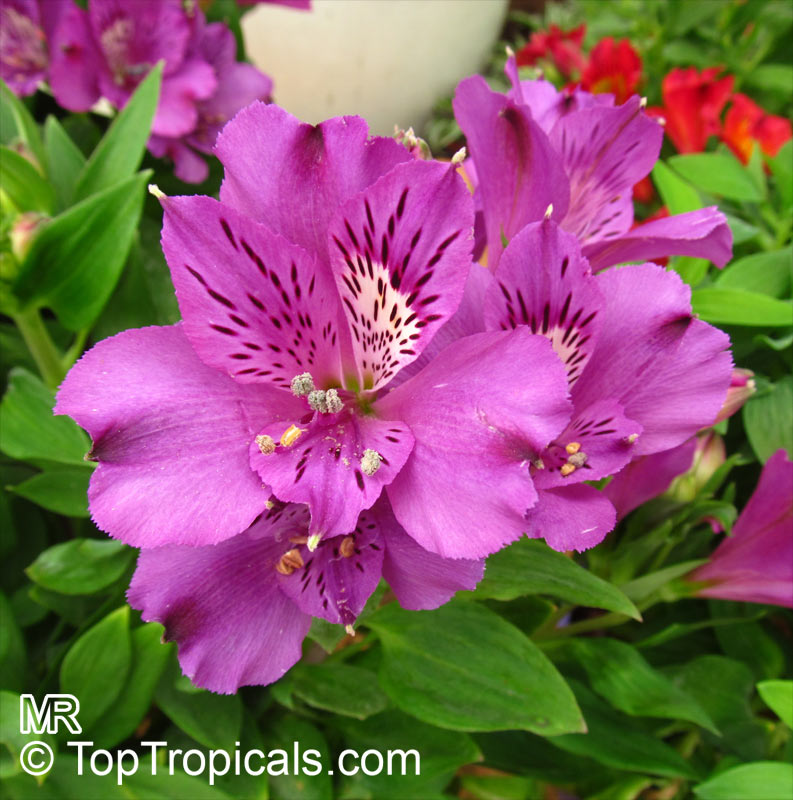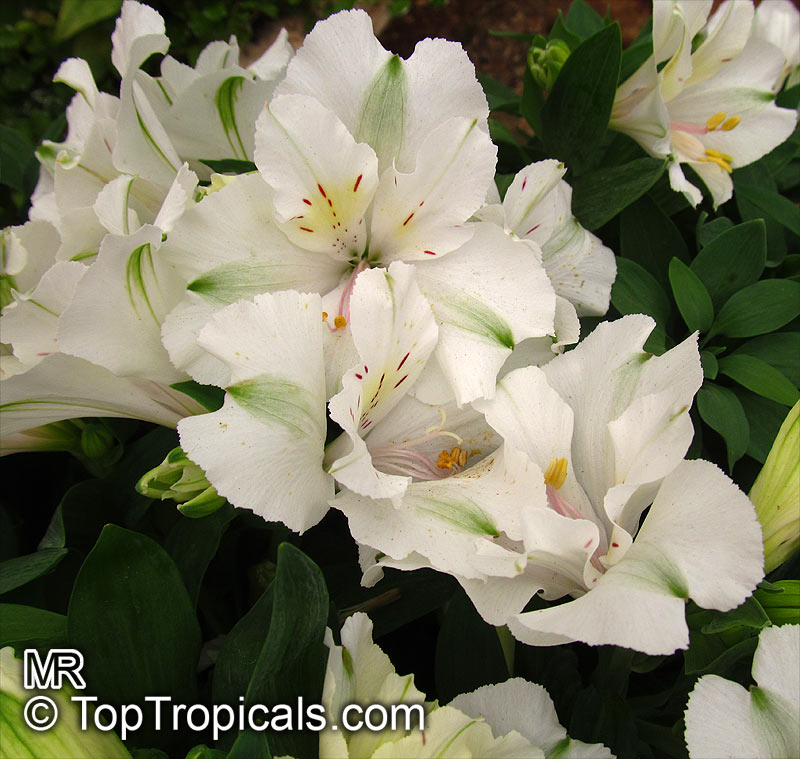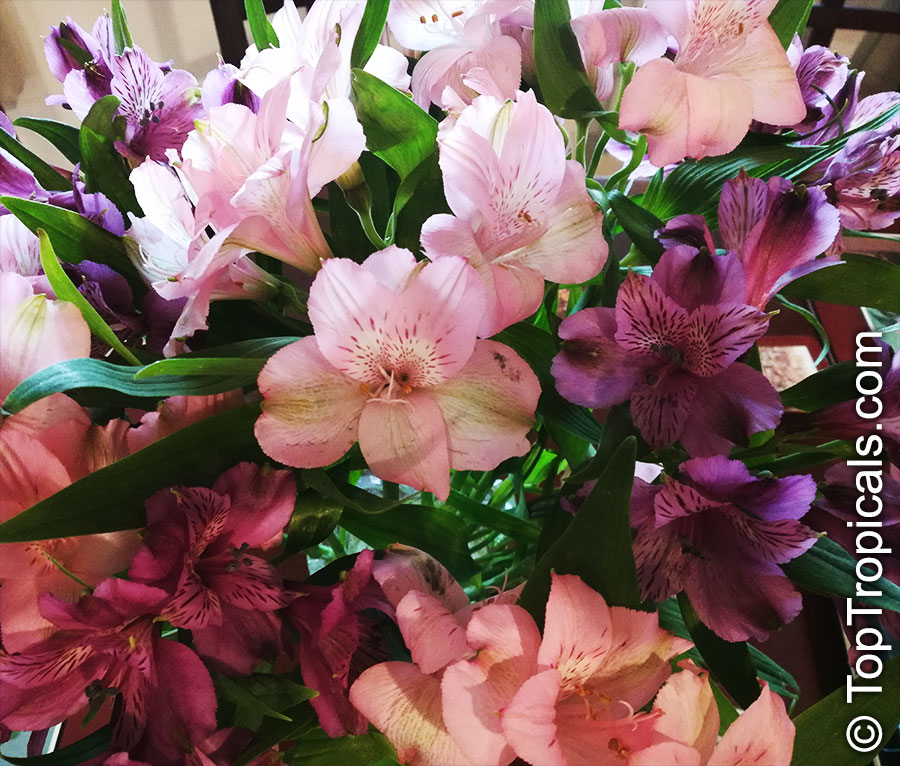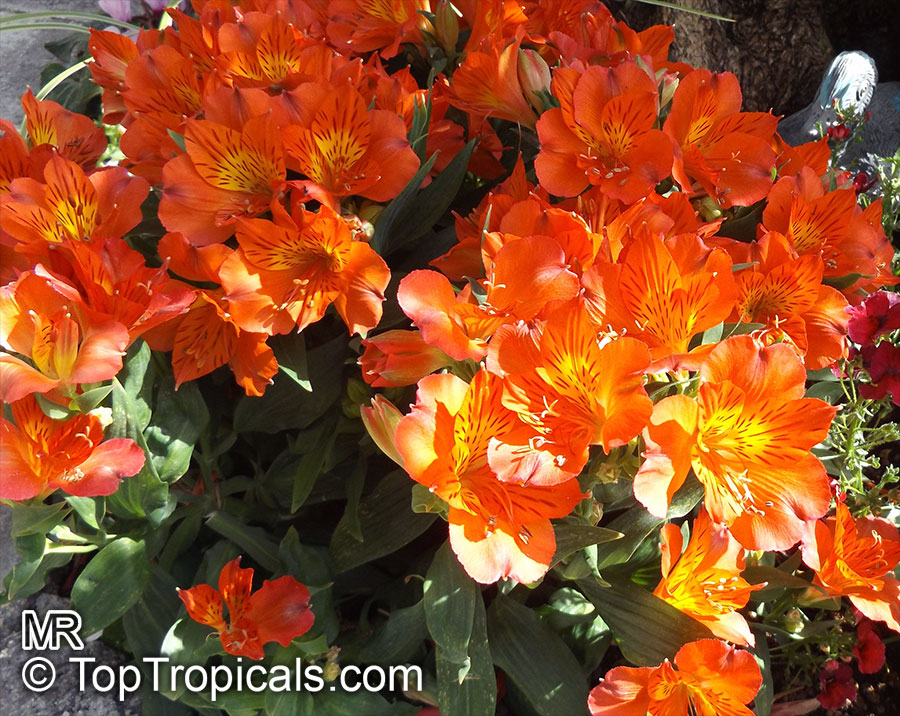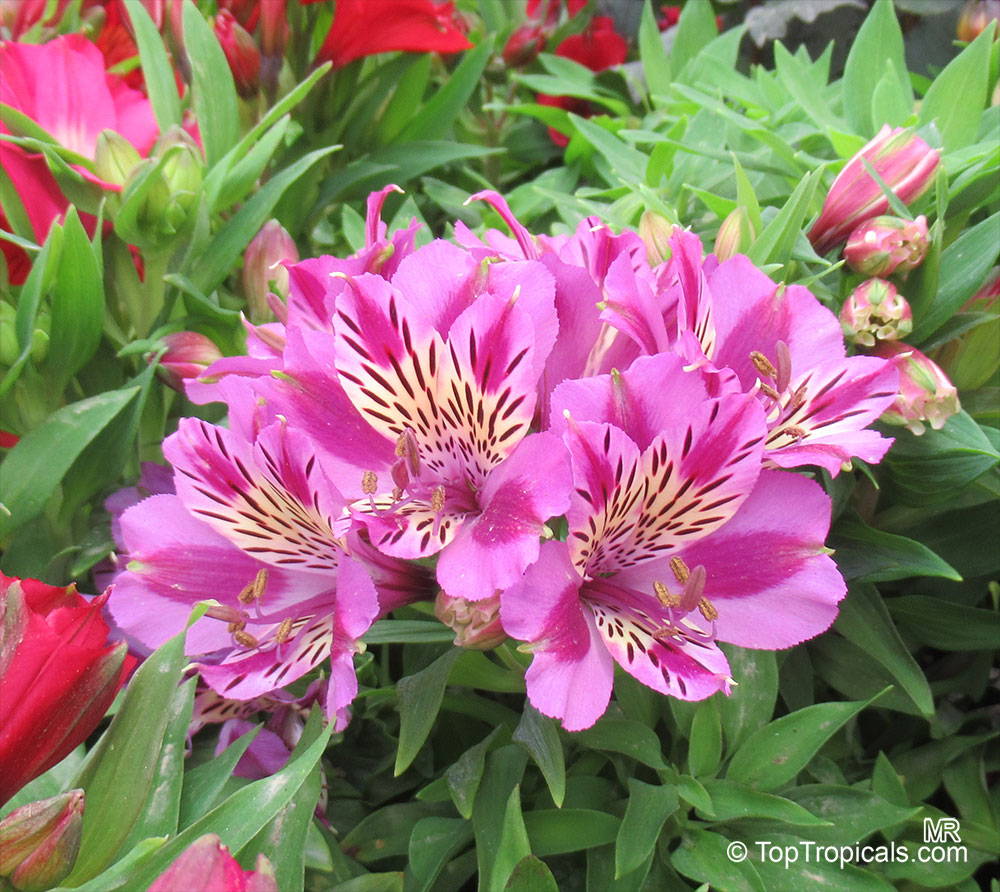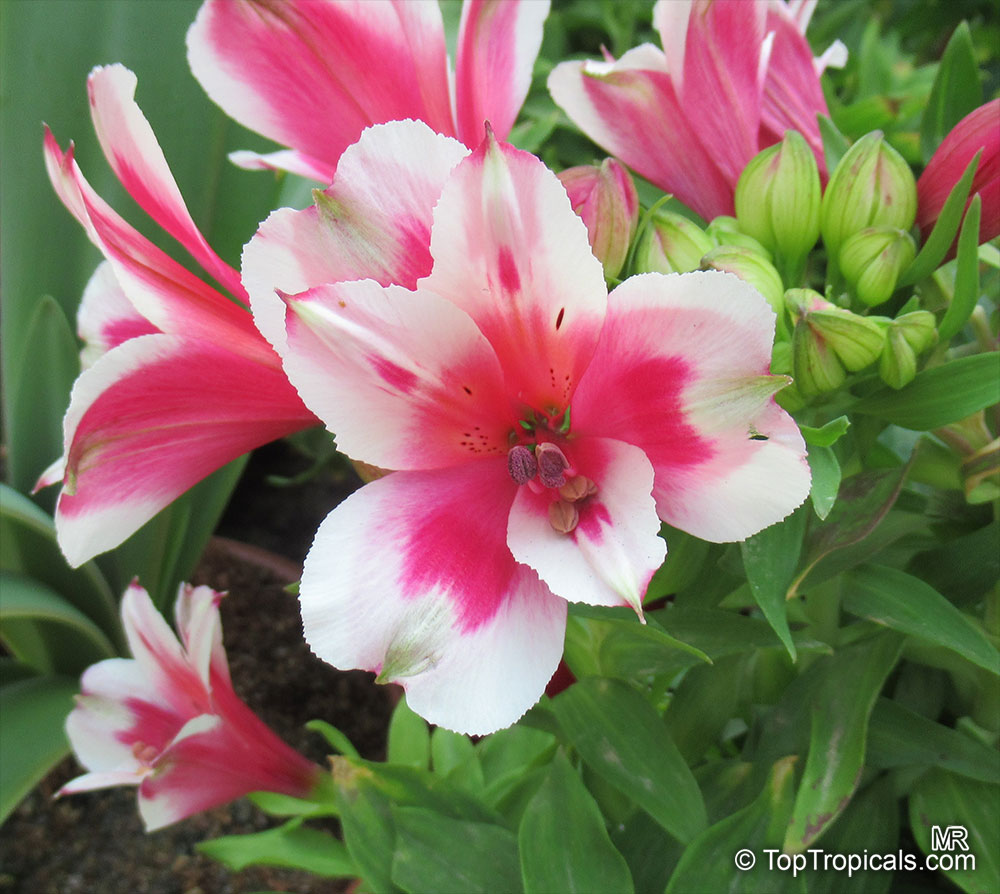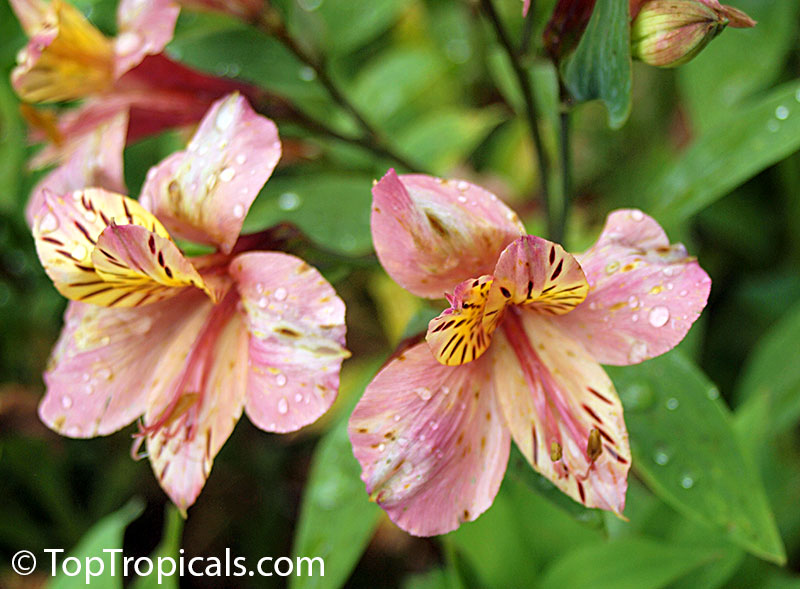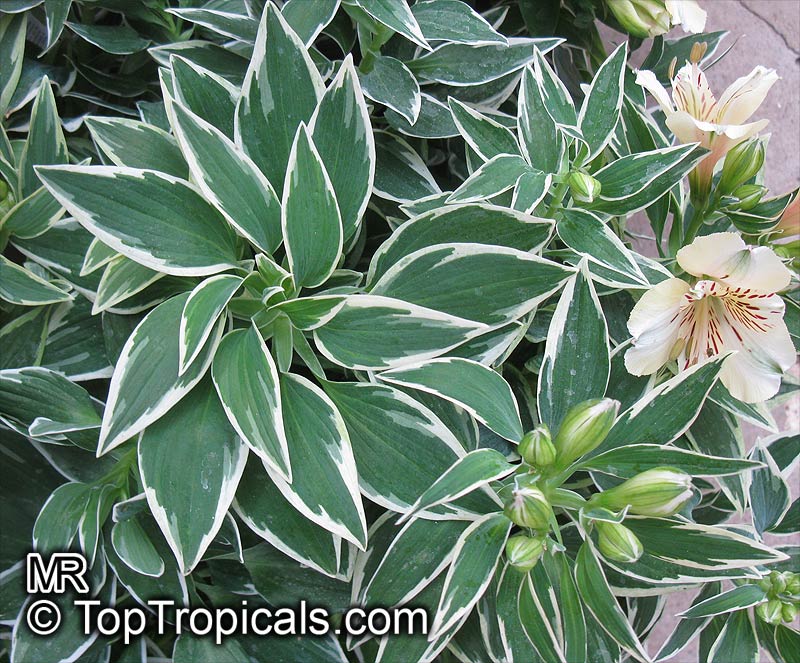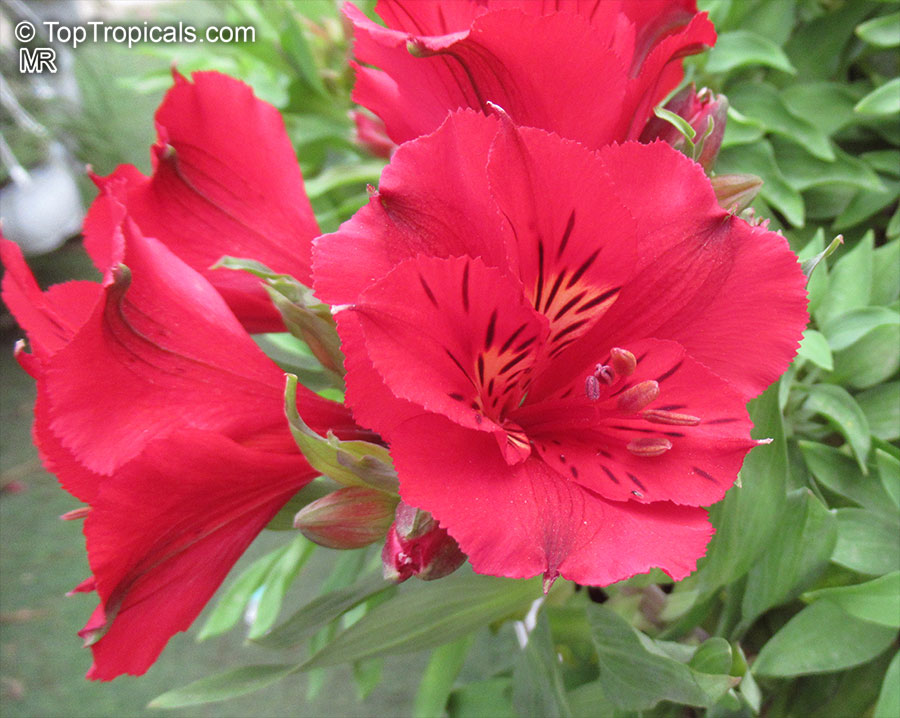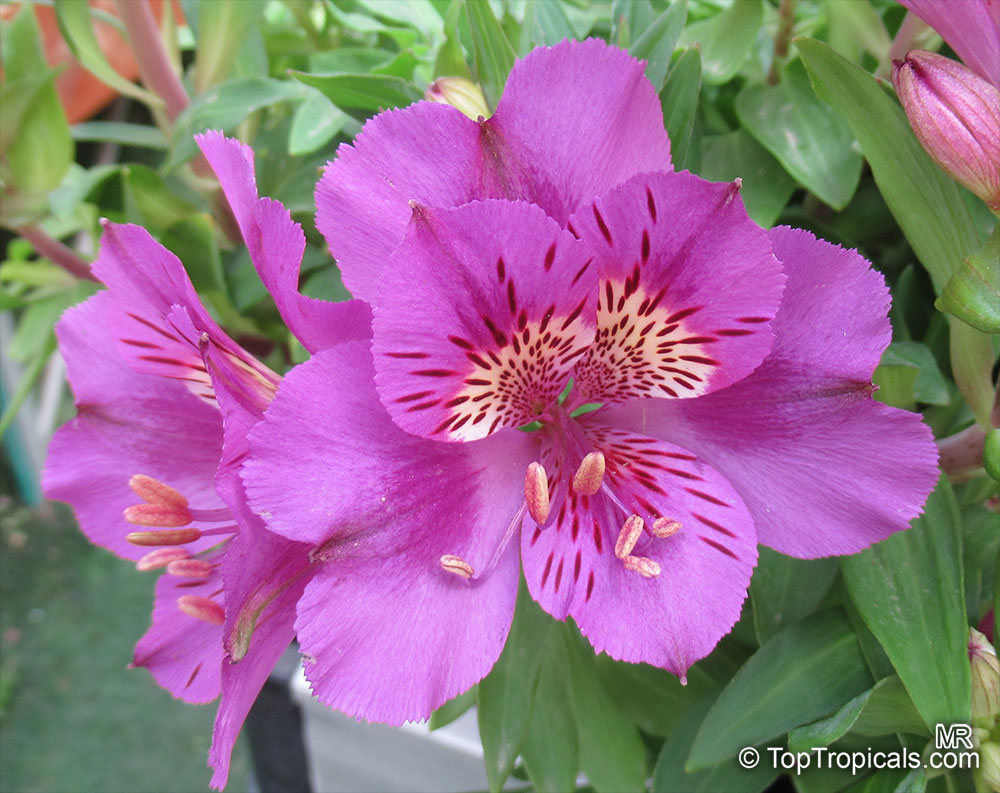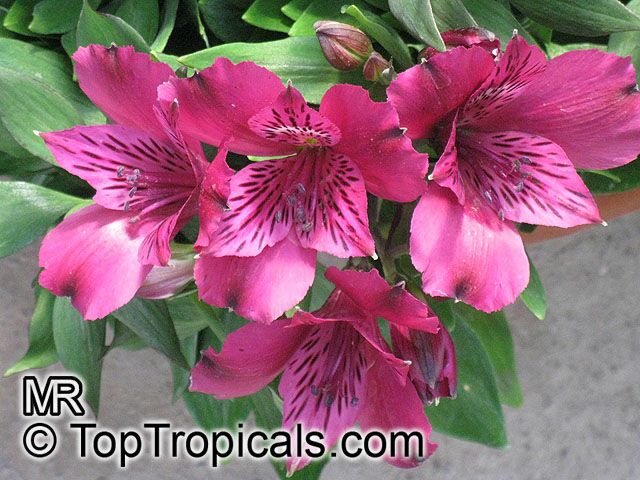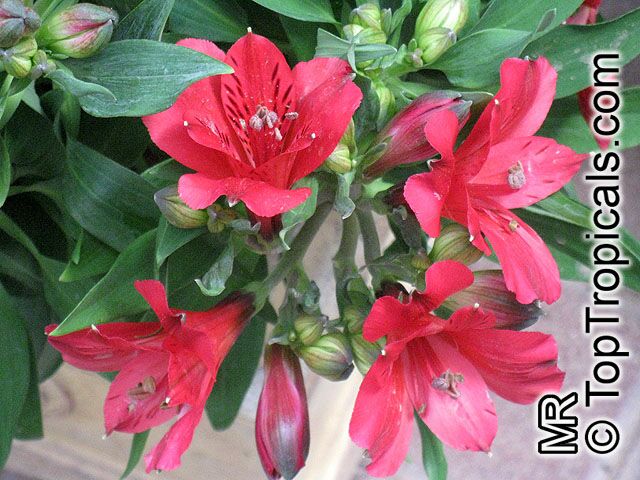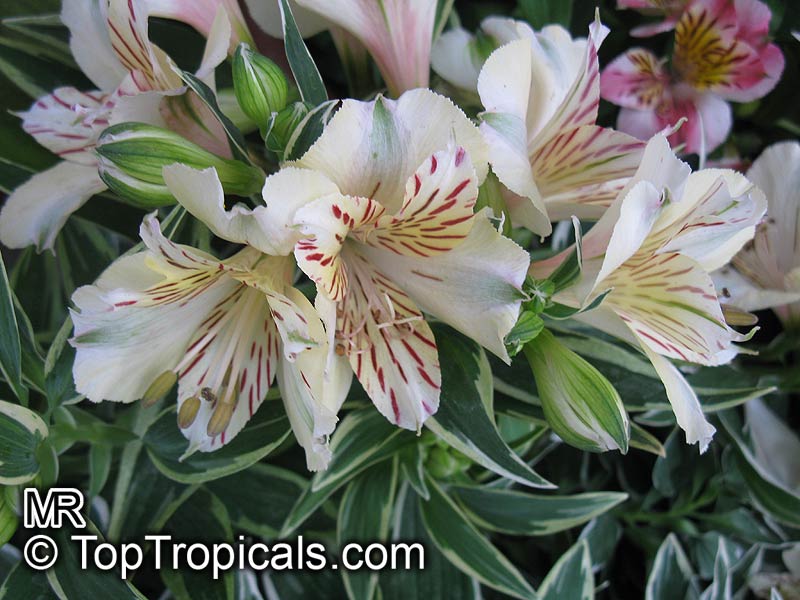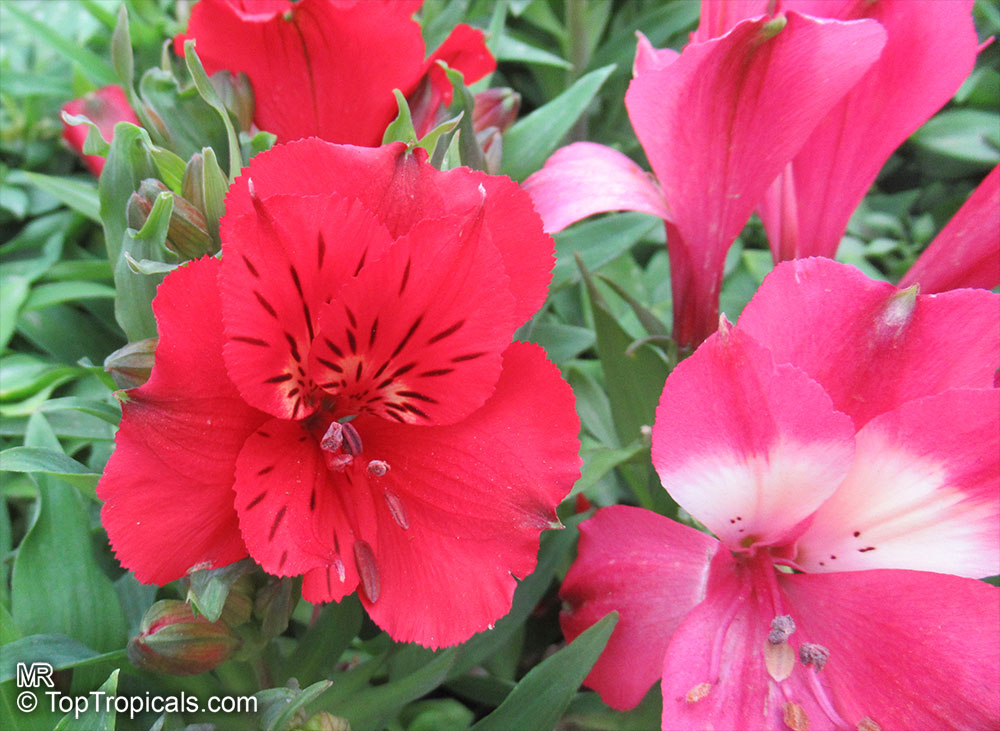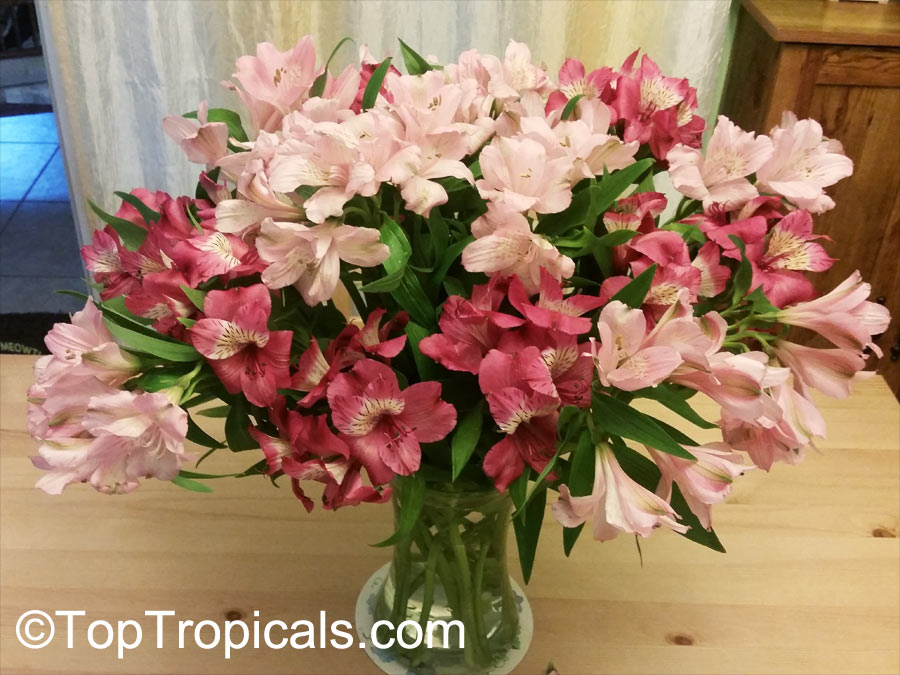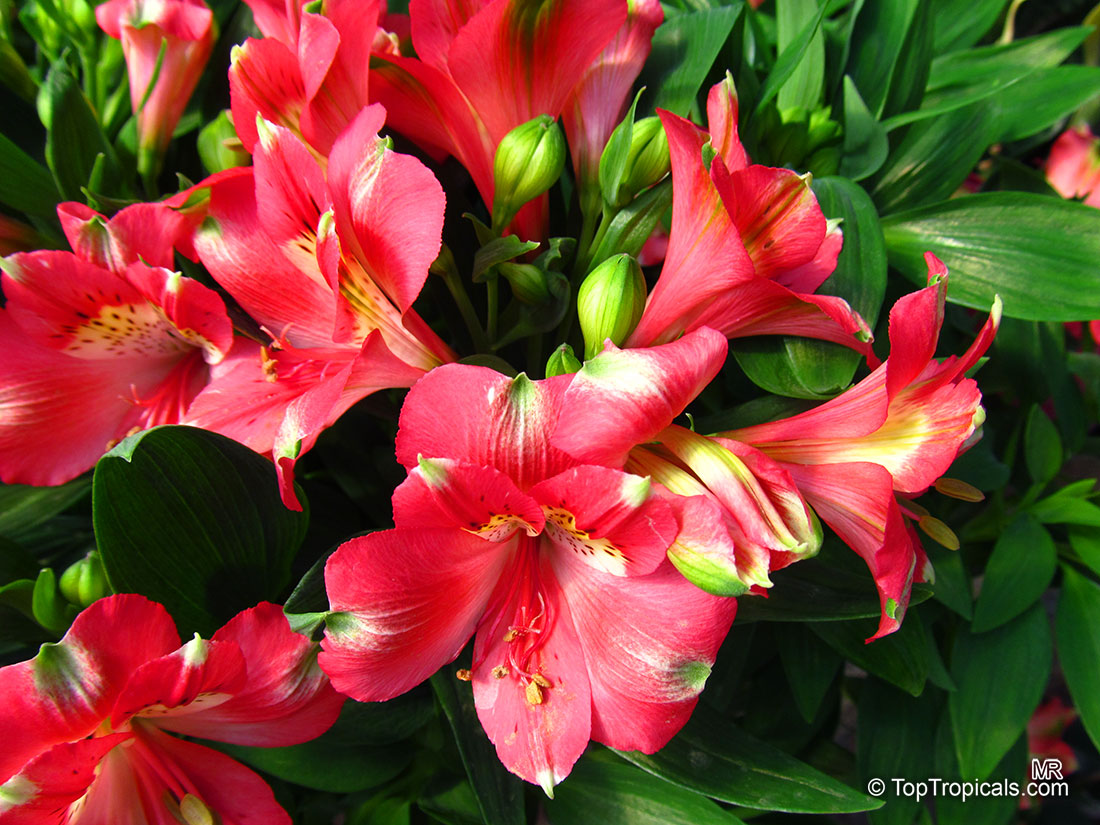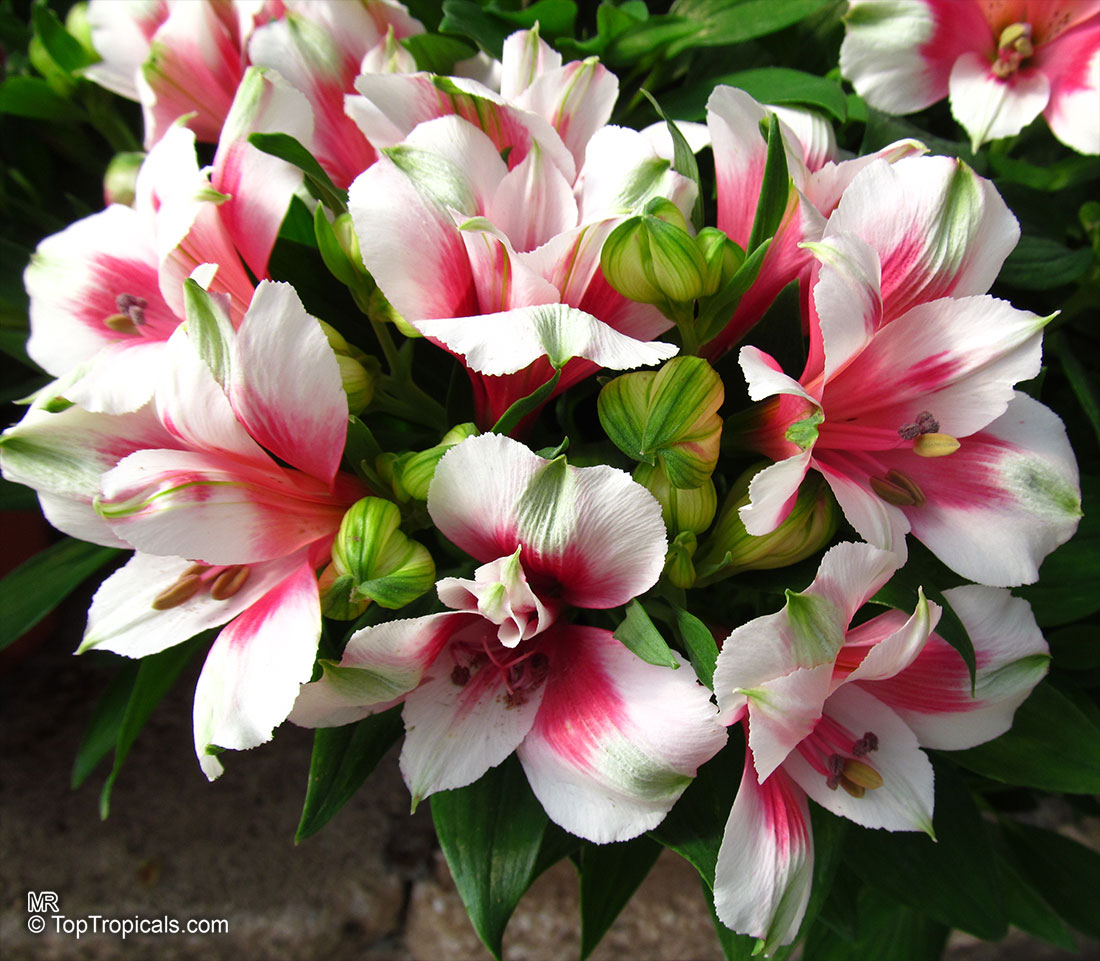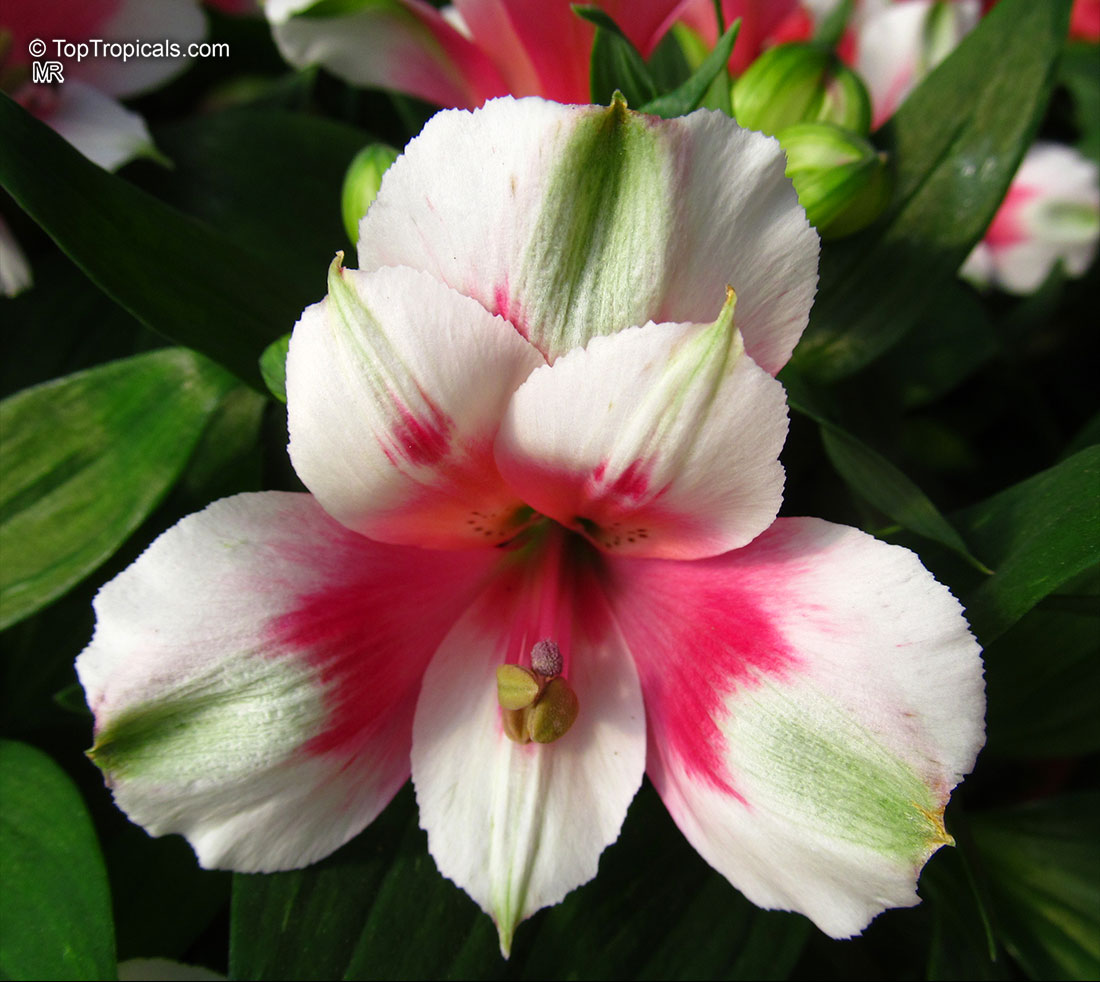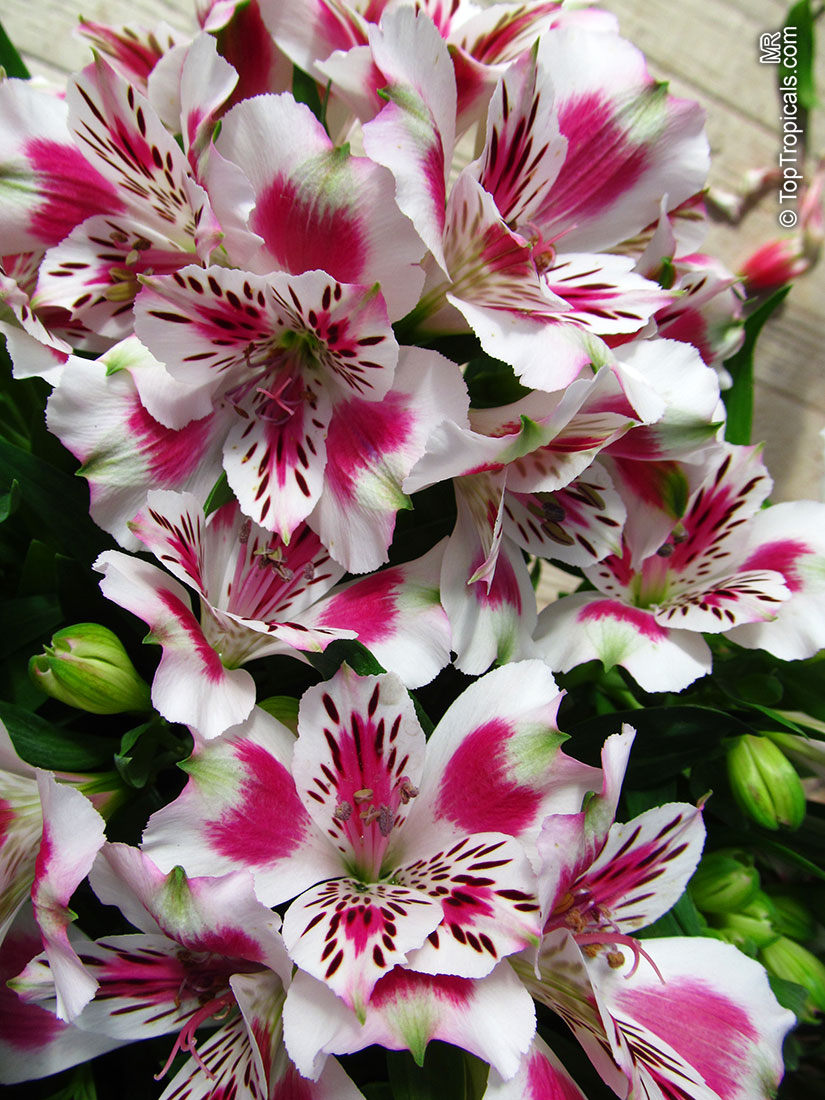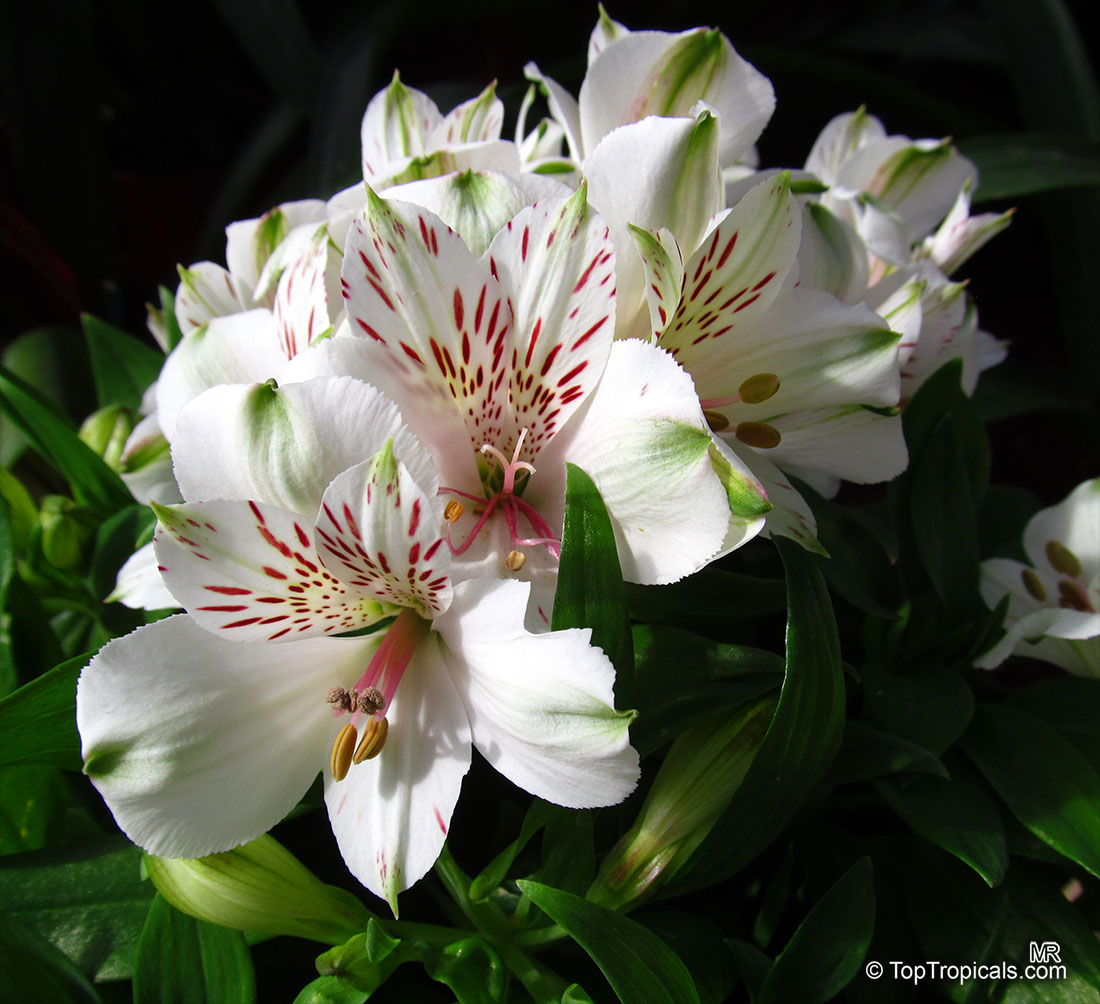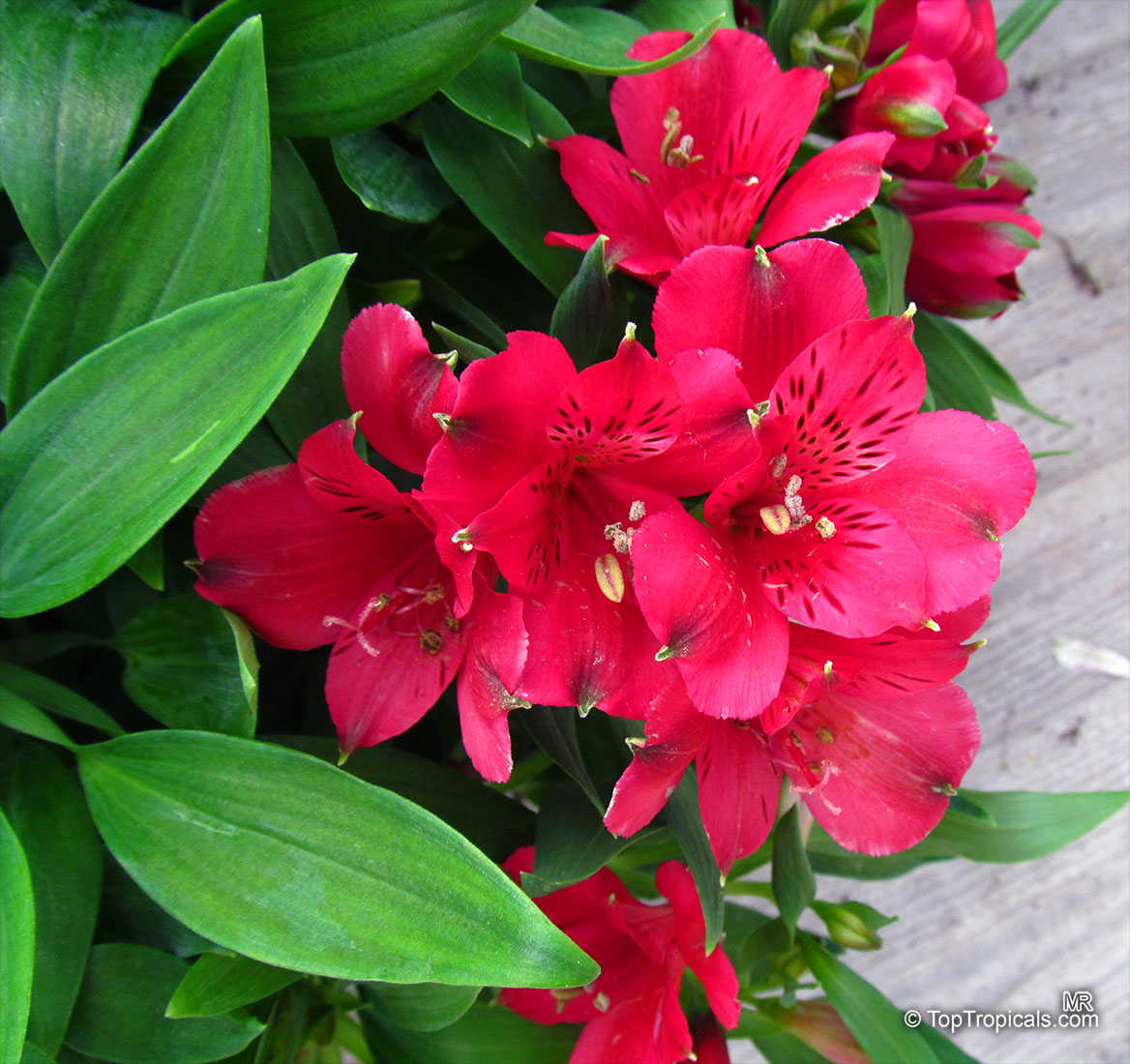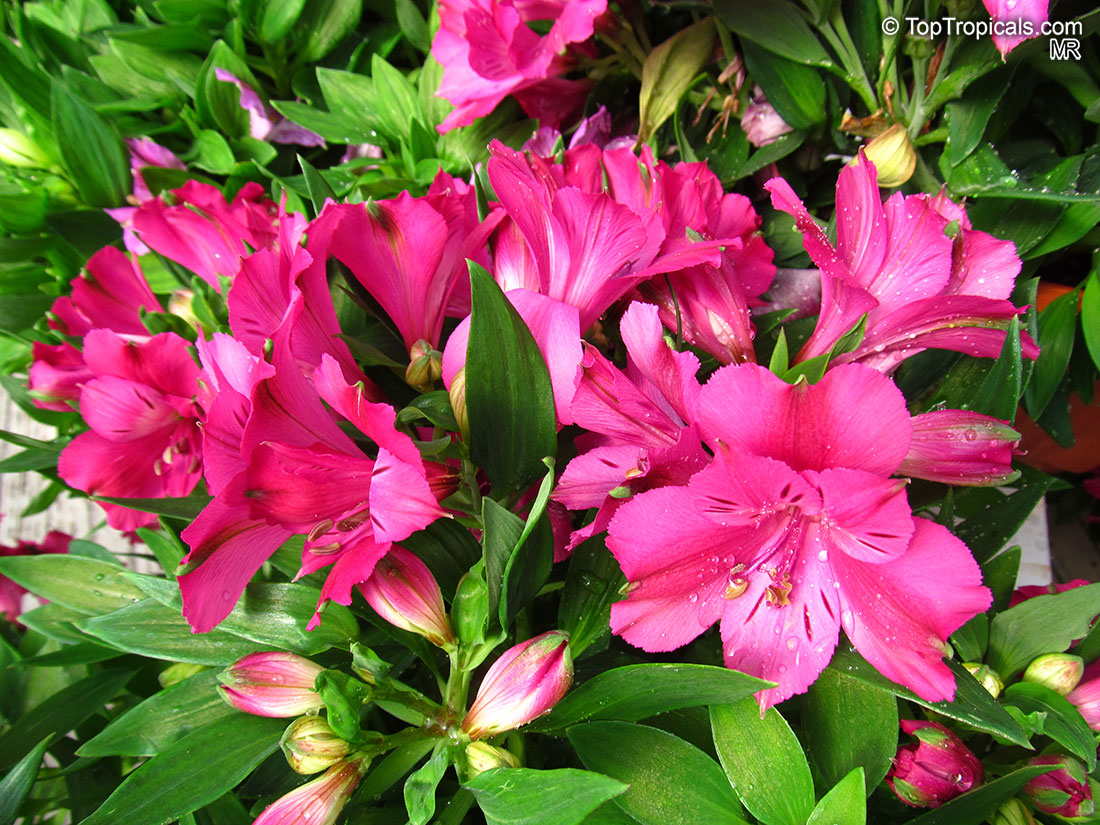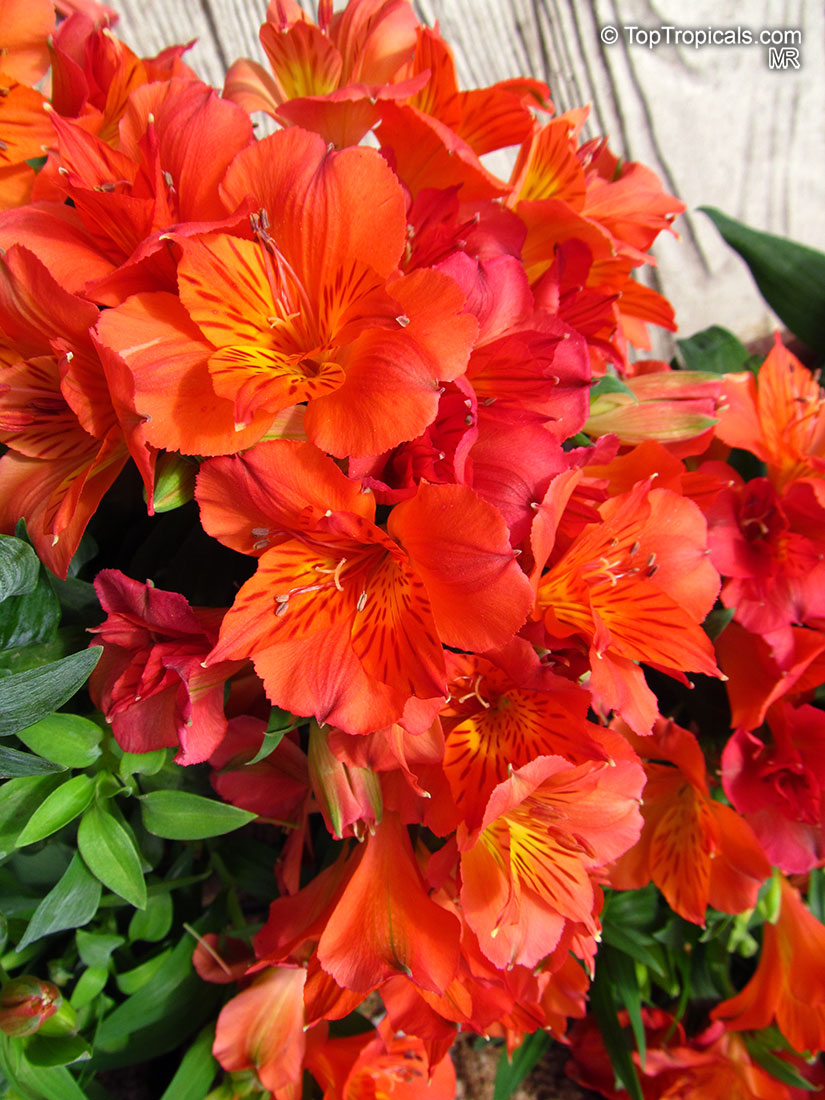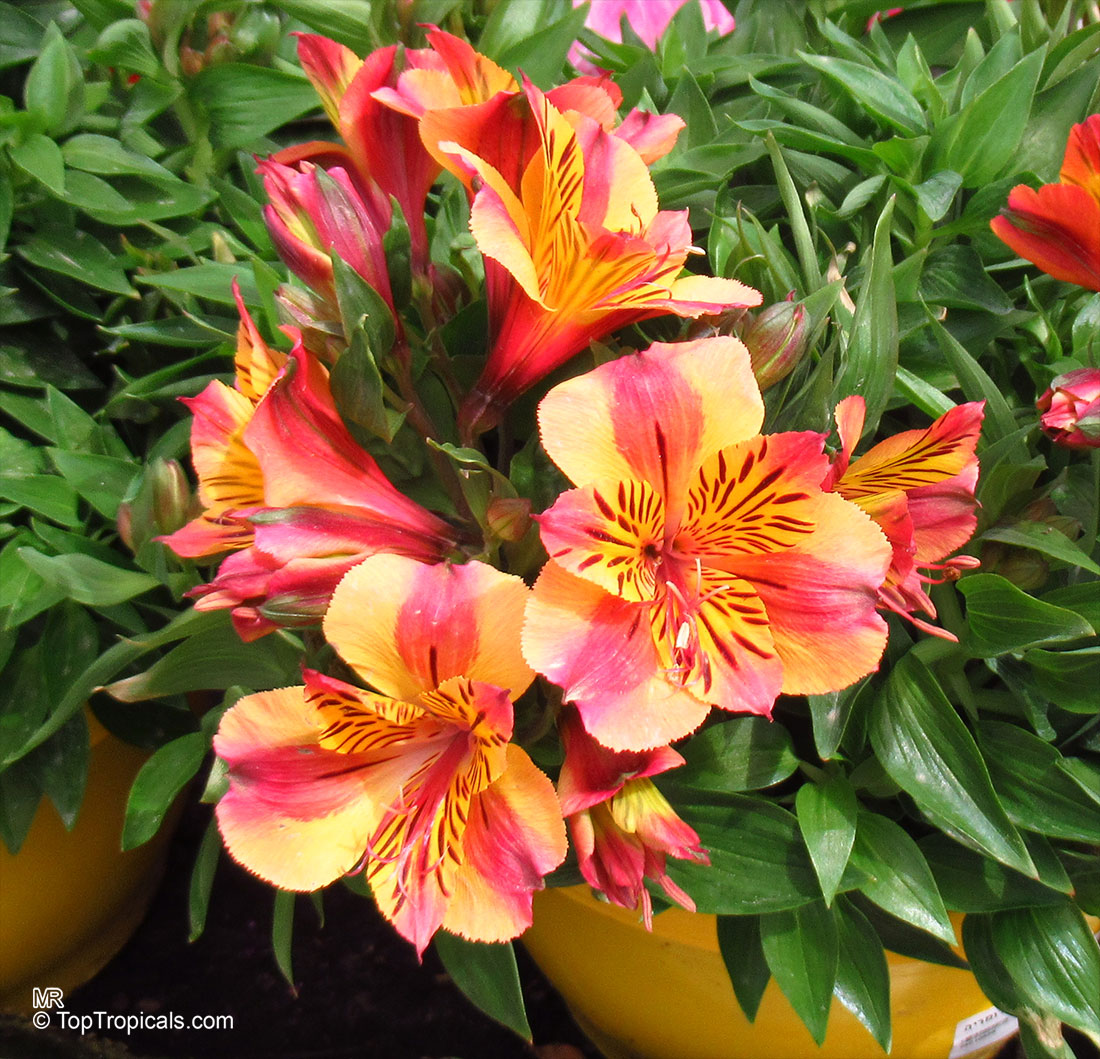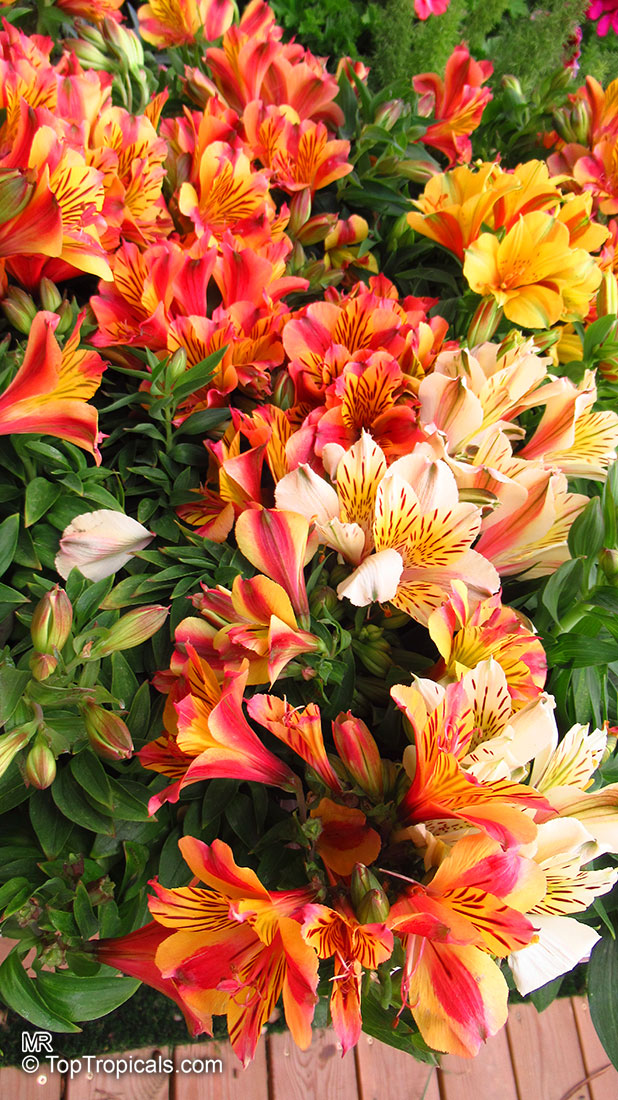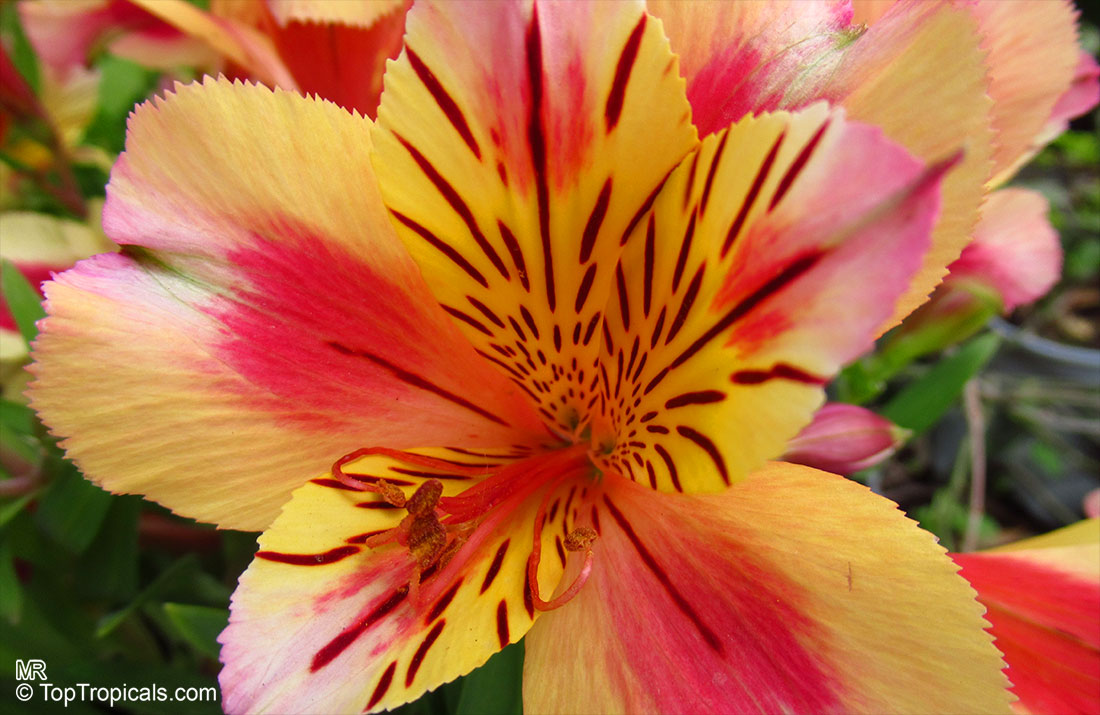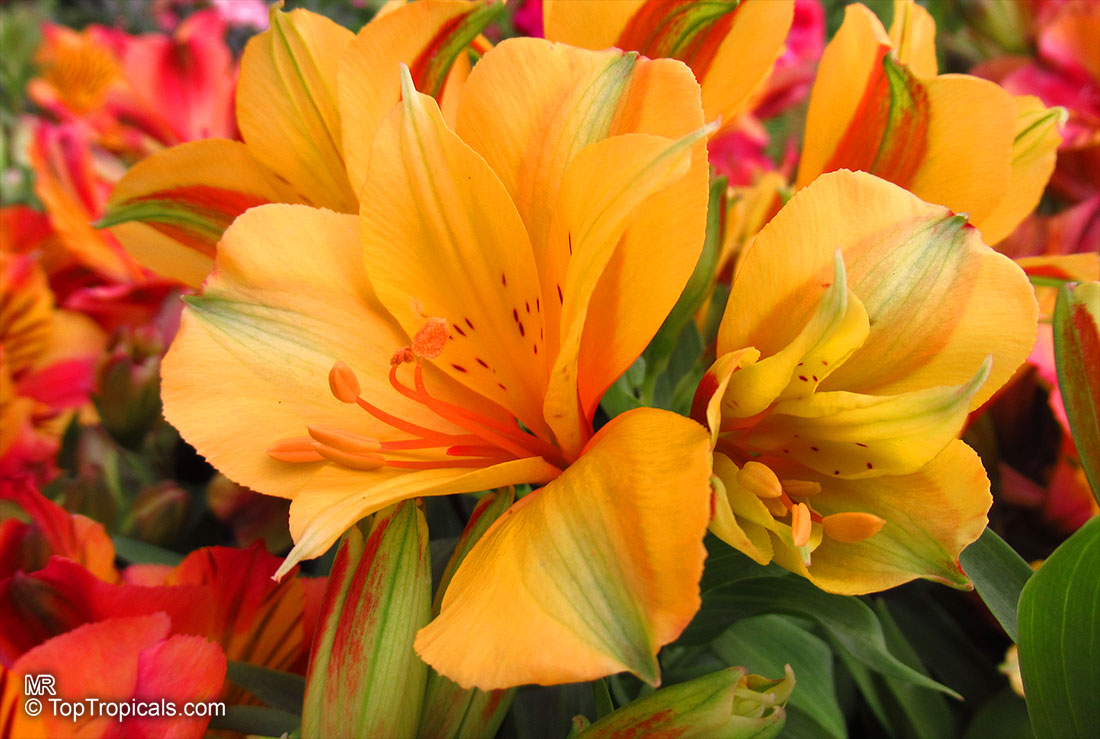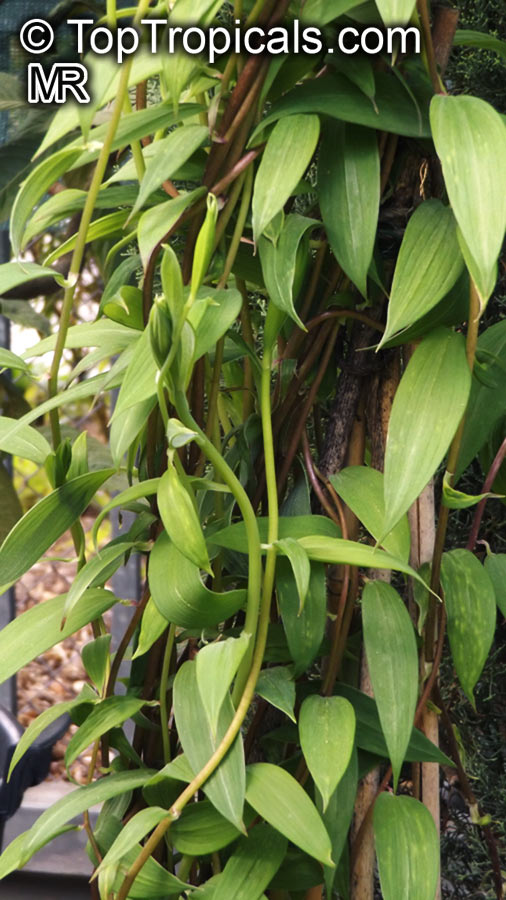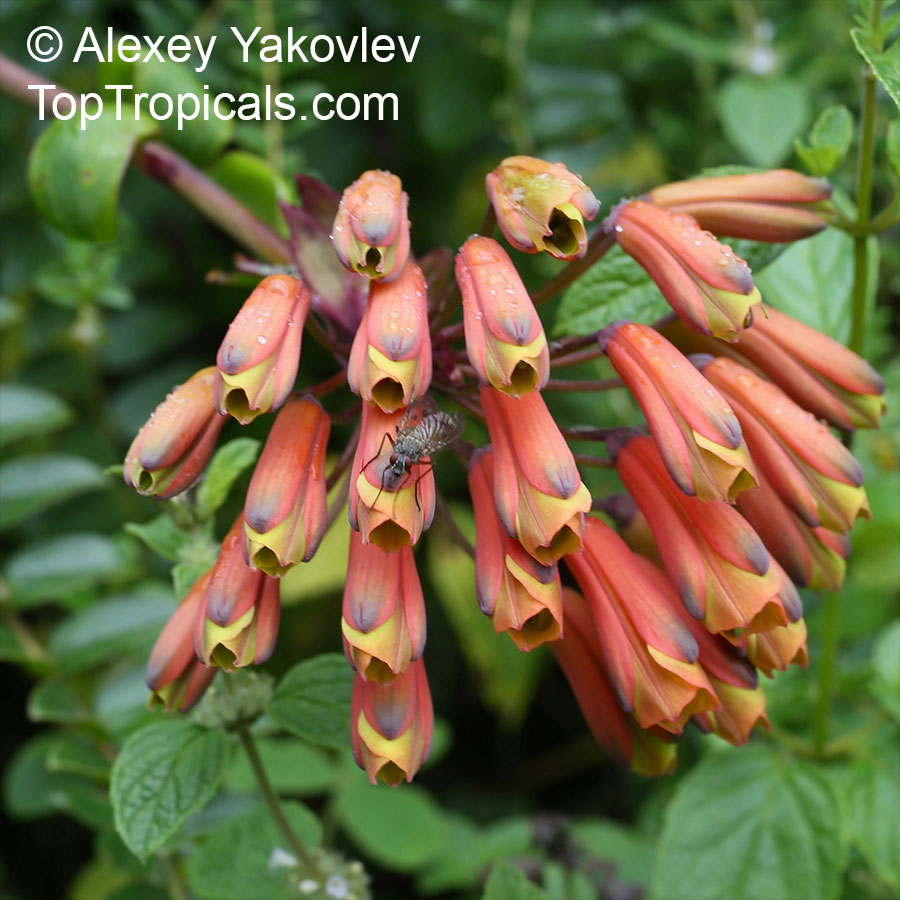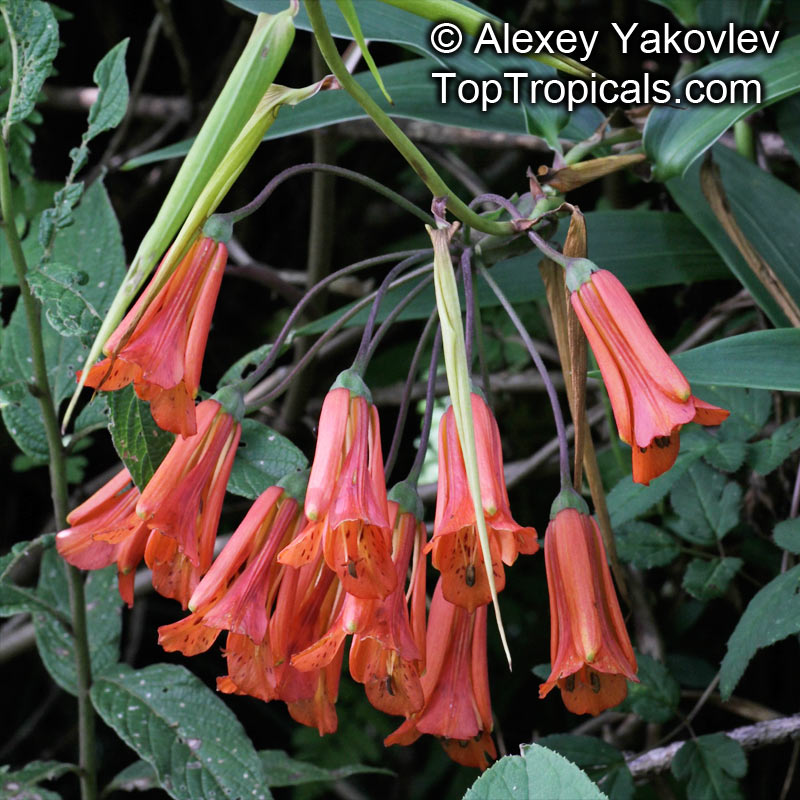Alstroemeriaceae - Botanical Family
Top Tropicals Plant Encyclopedia
| Number of plants found: 3 |
Botanical name: Alstroemeria psittacina
Common names: Parrotlily, Parrot Flower, Red Parrot Beak, New Zealand Christmas Bell
Family: Alstroemeriaceae
Origin: northern Brazil









Parrotlily is a small, evergreen to sparsely deciduous shrub, usually 2-5 ft tall and 3-4 ft wide. A woody perennial that is grown commercially as a root ball plant and is known for its bright unusual color and as a long blooming perennials. Parrotlily loves regular water, when established tolerates more moderate water. In cold regions, grow parrotlily in a pot and bring it in during winter months to prevent it from freezing. It should be grown in USDA Zones 7 -10 and is mature cold hardy in temperatures at least to the lower 30s F for a short time.
Parrotlily is attractive to bees and butterflies and hummingbirds, making it an ideal plant to attract pollinators to the garden. The unusual color and long blooming season of these flowers make them popular in cut flower arrangements. Plantings of parrotlily in mass can be quite striking.
When growing in containers, as houseplants, or in colder climates, make sure to provide containers that are 18 to 24 inches in diameter with adequate drainage. The parrotlily prefers slightly acidic, fertile soil and full sun. Keep the soil evenly moist and water the plant from above to prevent water from getting into the center of the plant and rotting the root system. Keep the soil temperature warm, but not hot. Add a layer of mulch to help keep the soil moist and regulate temperature during the colder months. Fertilize parrotlilies, depending on the soil pH, once or twice a year with a slow- release granular fertilizer. Prune any dead or damaged branches anytime and always deadhead spent flowers to encourage new blooms.
Botanical name: Alstroemeria sp.
Common name: Peruvian Lily
Family: Alstroemeriaceae
Origin: South America












Once established, Peruvian Lilies require occasional water, and occasional fertilizing.
Grown in hardiness zones 7-11, Alstroemeria sp. (Peruvian Lily) is a small shrub, with a size ranging from 2 to 5 ft that is native to South America. It is an ideal plant for making a statement in your garden with its abundant profusion of colorful flowers. It has the potential to bring a mix of striking colors to your space with its range of pink, white and off-white, blue, lavender, purple and red to crimson and vinous, and yellow to orange flowers. It can also be used to attract butterflies and hummingbirds to your space.
When it comes to growing and caring for your Peruvian Lily, it prefers full sun in areas with cool summers, however in Florida and other hot summer regions, plant in semi-shade or full-shade to protect the plant from the scorching heat. As for water and fertilizing requirements, it is suitable for moderate water and occasional fertilizing once it is established.
If you're in a more temperate climate where it gets cold, and you want to take the plant indoors during Winter, potting it up is a great option. Just make sure to avoid over-watering, group plants together and use a light, well-draining mix for your pot. When caring for Peruvian Lily in the colder months, choose a spot that doesn't receive direct sun light, as this can cause them to become more susceptible to cold damage. For maximum cold protection, you should ensure that your pot is placed in a sheltered and frost-free location, with a temperature hardy enough to warrant a mature plant in the colder winter months.
Botanical name: Bomarea sp.
Common name: Bomarea
Family: Alstroemeriaceae
Origin: Central America, Mexico










These plants are similar to their relatives in Alstroemeria, but many take a twining form. There are about 100 species, some of which are non-climbing, growing more like a ground cover, although the majority are climbers.
Use link to repeat this search:
https://toptropicals.com/cgi-bin/garden_catalog/cat.cgi?search_op=and&keyword_op=and&language=e&family=Alstroemeriaceae
&number=10&no_change_lang=1&user=tt&sale=1&first=0
